Front yard boxwood designs offer timeless elegance and year-round appeal for homeowners seeking sophisticated landscaping solutions. These versatile evergreen shrubs provide structure, formality, and natural beauty through various design approaches. Whether you prefer traditional English garden aesthetics, modern minimalist arrangements, or cottage-style informal layouts, boxwood adapts beautifully to different architectural styles and personal preferences. From precise geometric patterns to flowing organic shapes, these designs create stunning curb appeal while requiring minimal maintenance once established. Each design concept represents a complete transformation approach, incorporating layout principles, plant arrangements, and complementary elements to achieve cohesive front yard beauty.

1. Classic Spherical Boxwood Entry Garden
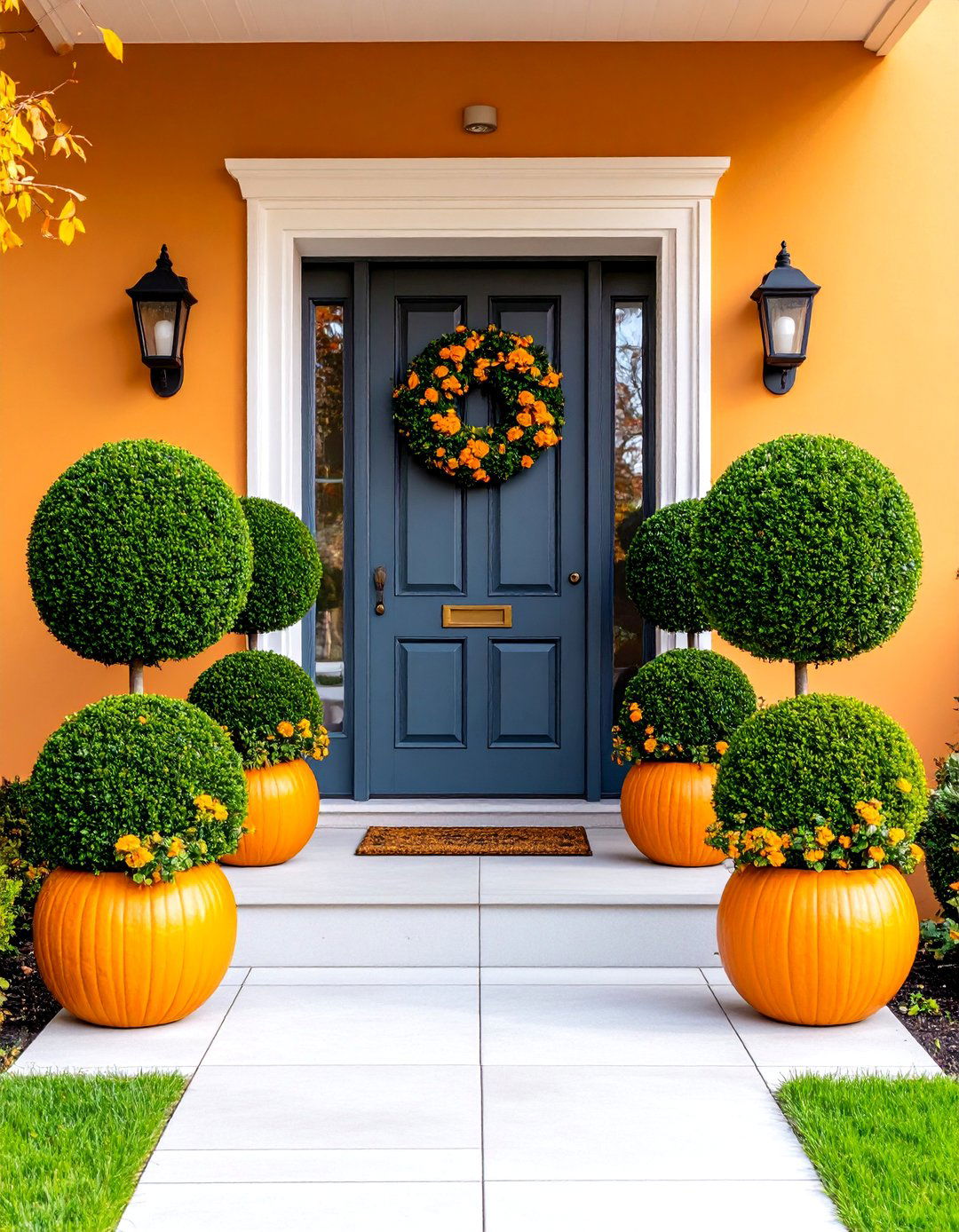
Transform your front entrance with perfectly rounded boxwood spheres creating a welcoming symmetrical design. Position matching globe-shaped boxwoods on either side of your front door, complemented by additional spheres along the walkway edges. This timeless approach combines formal structure with approachable elegance, featuring various sized boxwood balls arranged in ascending heights. The spherical shapes provide year-round architectural interest, working beautifully with brick, stone, or wooden house facades. Underplant with seasonal flowers like white impatiens or purple violas for color contrast. The repetitive circular forms create visual rhythm while maintaining crisp, manicured appearance that enhances property value and creates lasting first impressions.
2. Formal Parterre Boxwood Garden Design
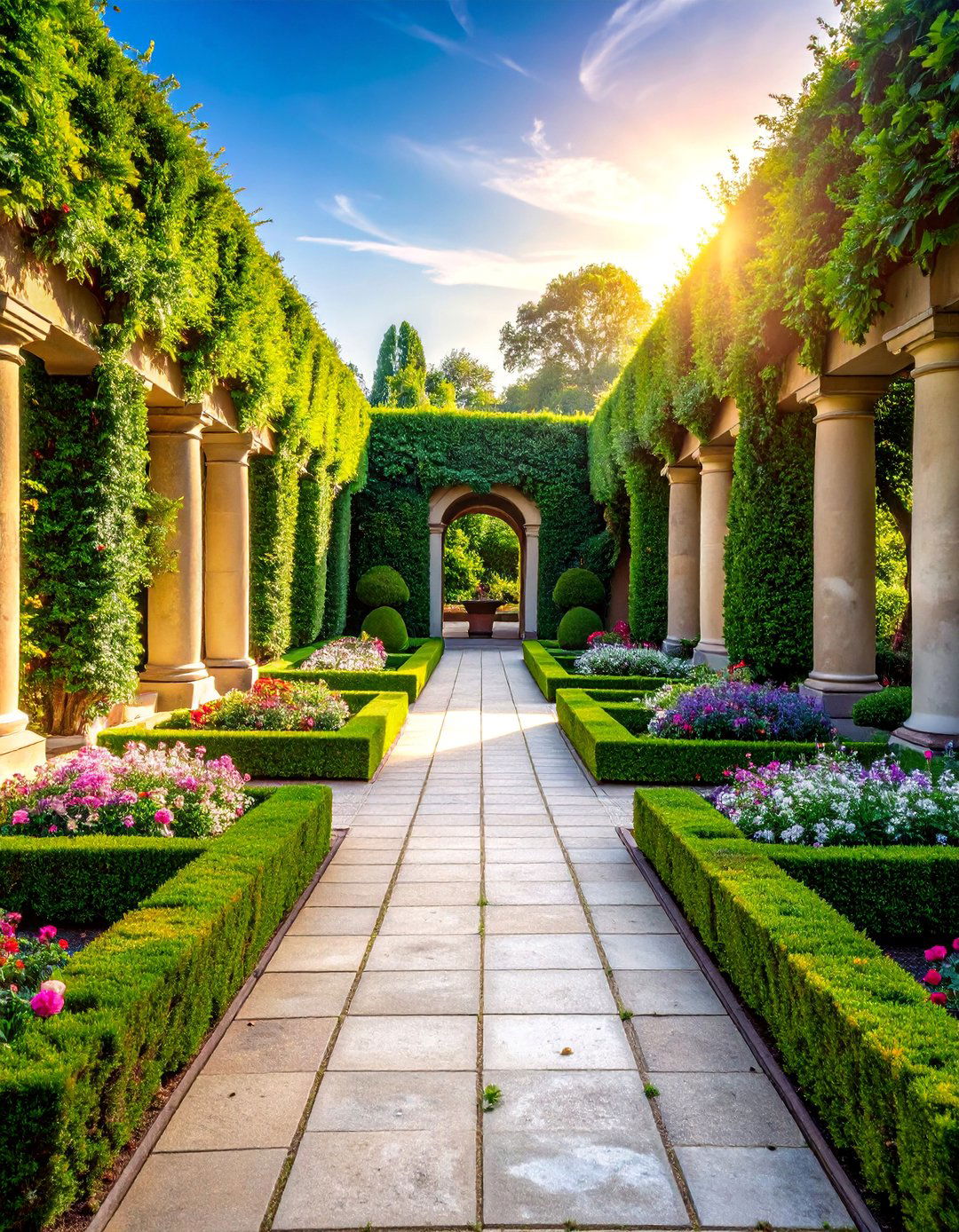
Create an elaborate geometric parterre garden using low boxwood hedging to form intricate symmetrical patterns filled with colorful seasonal plantings. This French-inspired design features carefully planned geometric compartments outlined by dwarf boxwood borders, creating elegant decorative sections. Each compartment showcases different plant varieties including roses, herbs, or annual flowers, while maintaining overall design cohesion. The formal layout requires precise spacing and regular maintenance but delivers unmatched sophistication. Central focal points like birdbaths, sundials, or ornamental trees anchor the composition. Gravel pathways between sections provide access and visual definition. This design works exceptionally well with Georgian, Colonial, or French architectural styles, creating stunning curb appeal.
3. Spiral Topiary Boxwood Entrance Design

Develop dramatic vertical interest using spiral-shaped boxwood topiaries flanking your front entrance or positioned along walkways. These sculptural elements require patient training and regular pruning but create striking architectural statements. Pair tall spiral topiaries with lower spherical boxwoods for layered visual appeal. The twisted forms add movement and artistry to traditional landscapes, working beautifully in formal or contemporary settings. Position spirals in decorative containers for flexibility or plant directly in ground for permanent installation. Complement with simple groundcovers like pachysandra or ivy to emphasize the topiary drama. Lighting beneath highlights the sculptural qualities during evening hours, creating magical silhouettes against house facades.
4. Low Boxwood Border Hedge Design
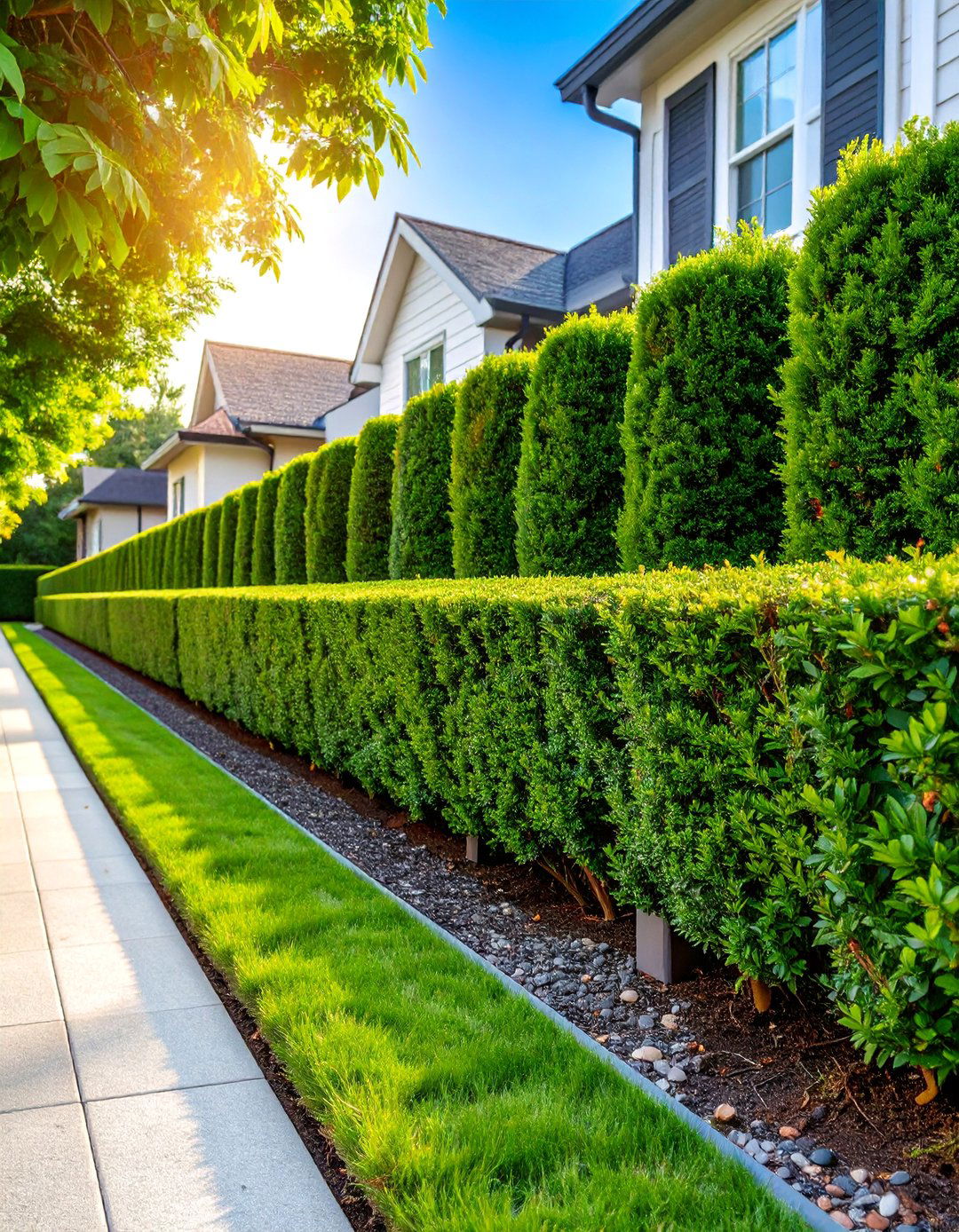
Establish clean property lines and garden definition using continuous low boxwood hedging throughout your front yard perimeter. This practical design approach creates structured boundaries while maintaining open, accessible feeling. The uniform hedge height, typically 12-18 inches, provides subtle separation without blocking views or creating fortress-like appearance. Plant spacing ensures dense, continuous coverage over time. This design works beautifully with various architectural styles, from cottage to contemporary homes. The hedge creates perfect backdrop for seasonal flower plantings while requiring minimal maintenance beyond annual trimming. Gates or openings in the hedge provide access points and visual interest, making the design both functional and aesthetically pleasing.
5. Boxwood Knot Garden Pattern Design

Construct an intricate knot garden using different boxwood varieties to create interwoven patterns reminiscent of medieval monastery gardens. This sophisticated design requires careful planning and plant selection, using contrasting boxwood varieties like green and variegated forms. The interlacing patterns create optical illusions of plants weaving over and under each other. Central areas can feature herbs, roses, or ornamental plantings. This design demands significant maintenance commitment but rewards with unparalleled elegance and historical authenticity. The geometric complexity makes it suitable for formal homes with adequate front yard space. Professional design consultation ensures proper proportions and plant selection for long-term success and visual impact.
6. Container Boxwood Topiary Collection
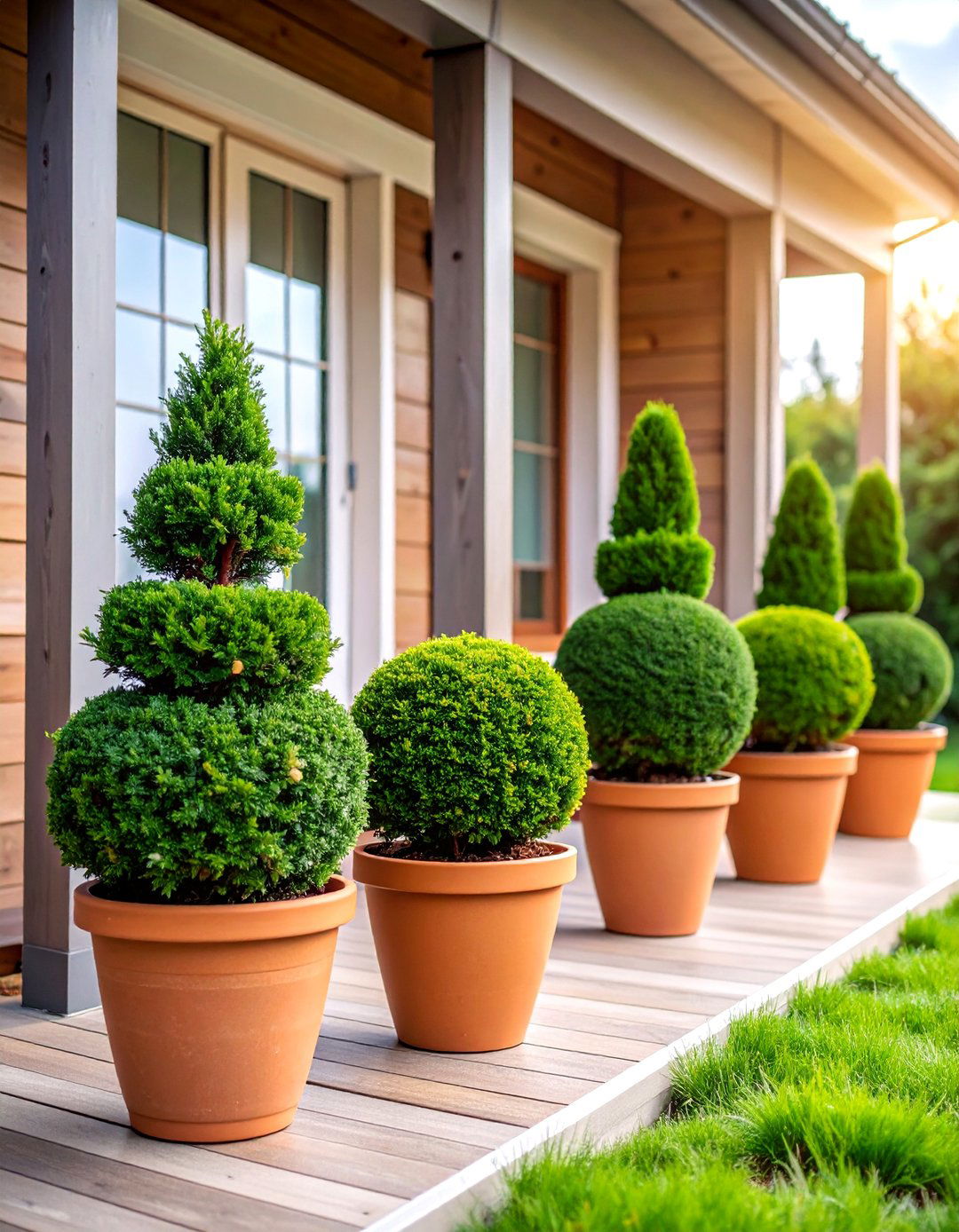
Design a flexible front yard display using various sized containers filled with shaped boxwood topiaries in different forms including spheres, cones, and standards. This approach offers seasonal flexibility and design adaptability. Large decorative pots in materials like terracotta, cast iron, or contemporary fiberglass create stunning focal points. Arrange containers in asymmetrical groups or formal symmetrical patterns depending on your architectural style. The portability allows seasonal rearrangement and winter protection in harsh climates. Include different topiary shapes and sizes for visual interest while maintaining cohesive color palette. This design works exceptionally well for urban settings, small front yards, or renters wanting sophisticated landscaping without permanent installation.
7. Layered Boxwood Foundation Planting

Create depth and architectural integration using graduated boxwood heights arranged in layers against your home's foundation. This design starts with tall boxwood varieties near the house, stepping down to medium and low forms toward the yard. The layered approach softens harsh architectural lines while providing year-round structure and color. Incorporate different boxwood varieties with varying growth habits and mature sizes. Add seasonal interest with flowering perennials or ornamental grasses between layers. This practical design addresses drainage, maintenance access, and proportional scaling to house size. The graduated heights create sophisticated visual flow while ensuring all plants receive adequate light and air circulation for healthy growth.
8. Geometric Boxwood Maze Design
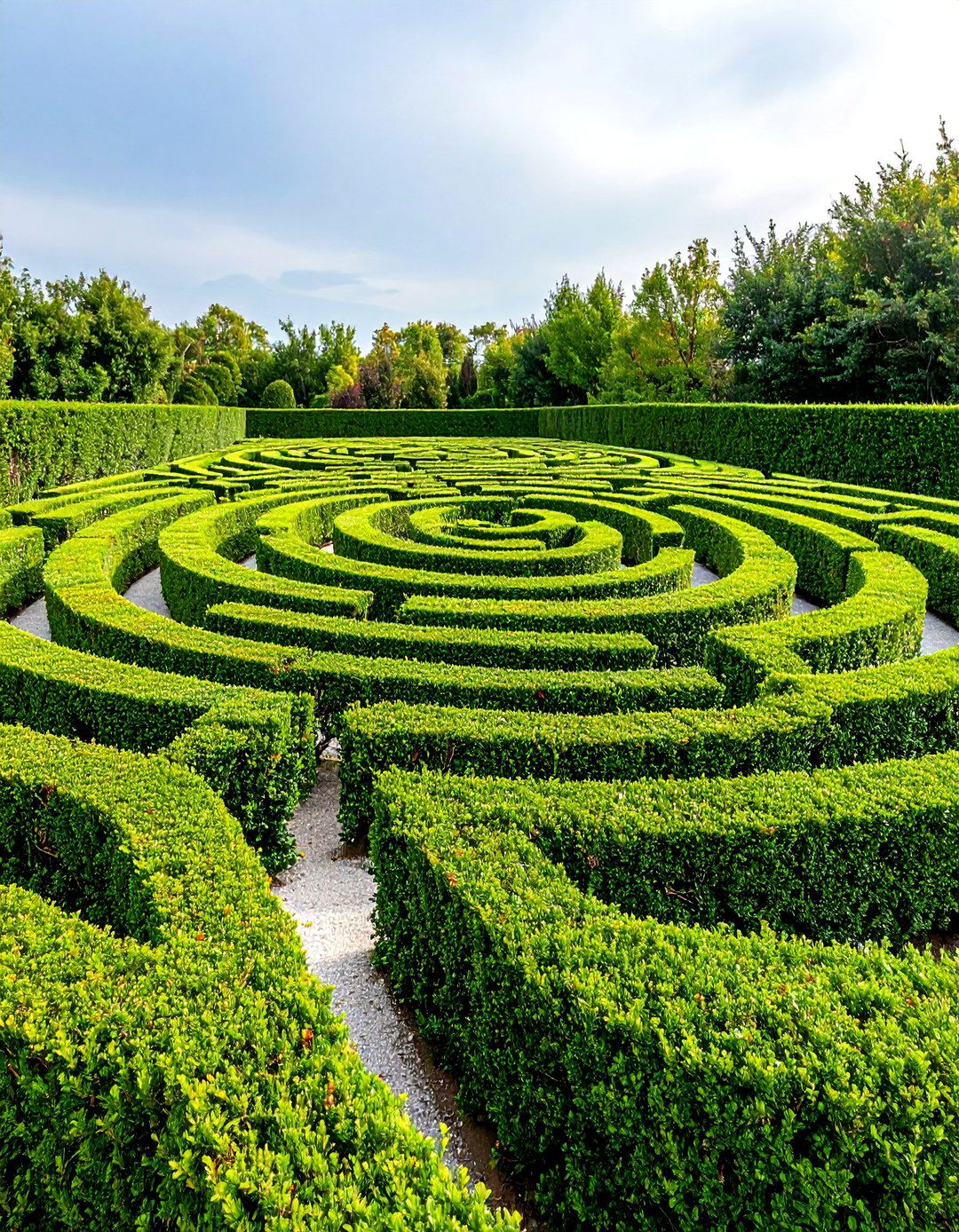
Transform larger front yards into conversation pieces using geometric boxwood hedging to create walkable maze patterns. This ambitious design requires significant space and long-term commitment but creates unique neighborhood landmark. The maze design can incorporate various geometric shapes including squares, circles, and triangular sections. Central destinations like seating areas, sculptures, or water features provide goals for maze navigation. Path widths must accommodate comfortable walking while maintaining intimate scale. Regular maintenance keeps pathways clear and hedge heights uniform. This design works best with larger properties and formal architectural styles. Professional landscape design ensures proper proportions, drainage, and accessibility while creating truly memorable front yard experience.
9. Mixed Boxwood and Perennial Border
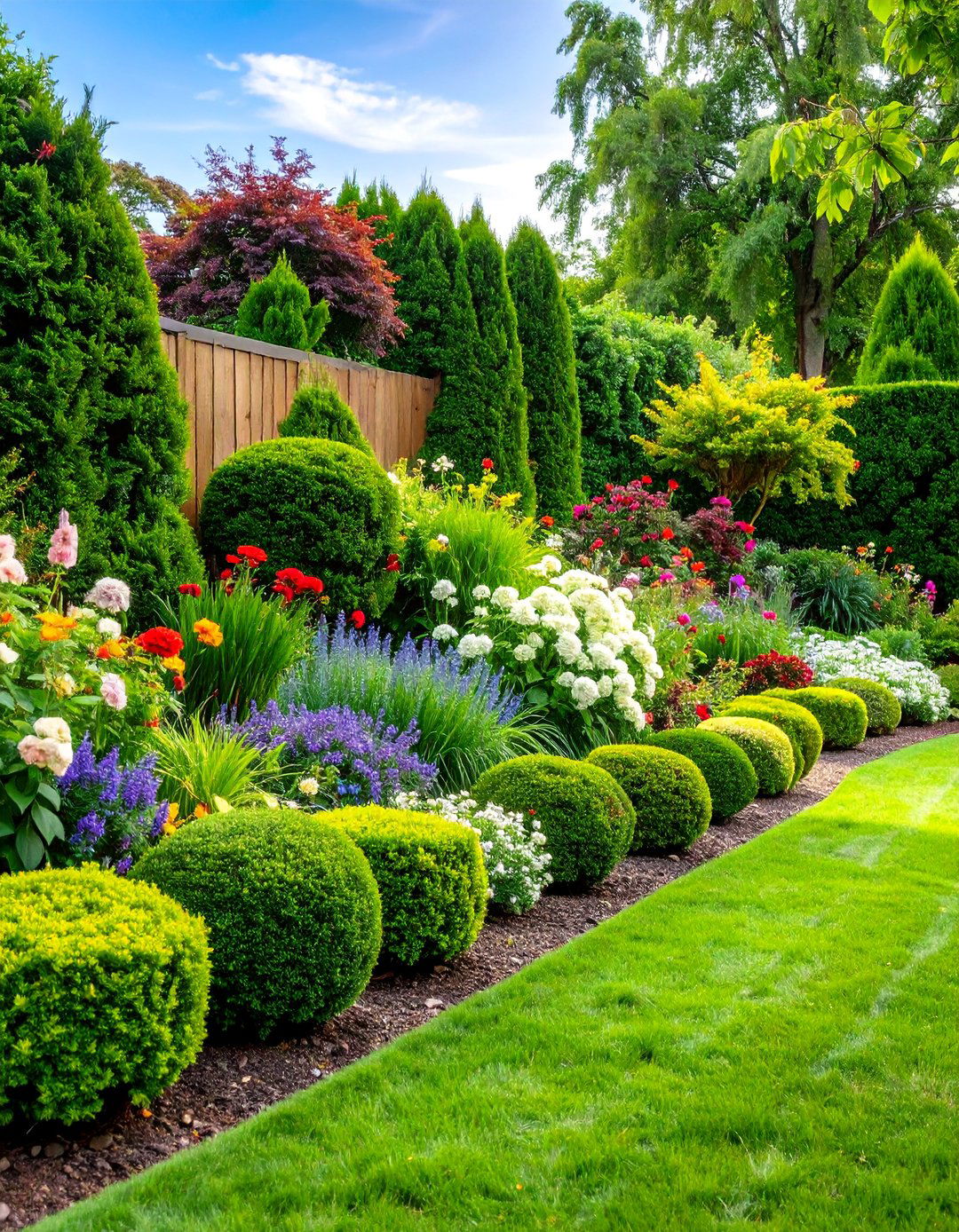
Combine structured boxwood elements with flowing perennial plantings to create dynamic year-round interest balancing formality with natural beauty. Use boxwood spheres or low hedging as anchor plants throughout mixed borders filled with seasonal flowers, ornamental grasses, and flowering shrubs. The evergreen structure provides winter interest when perennials are dormant. Color schemes can emphasize seasonal themes or maintain consistent palette throughout growing season. This design approach offers flexibility for plant experimentation while maintaining cohesive structure. The boxwood elements provide visual weight and formal punctuation among softer plantings. Regular editing and seasonal replanting keep borders fresh and interesting while boxwood structure remains constant foundation element.
10. Boxwood Standard Tree Allee
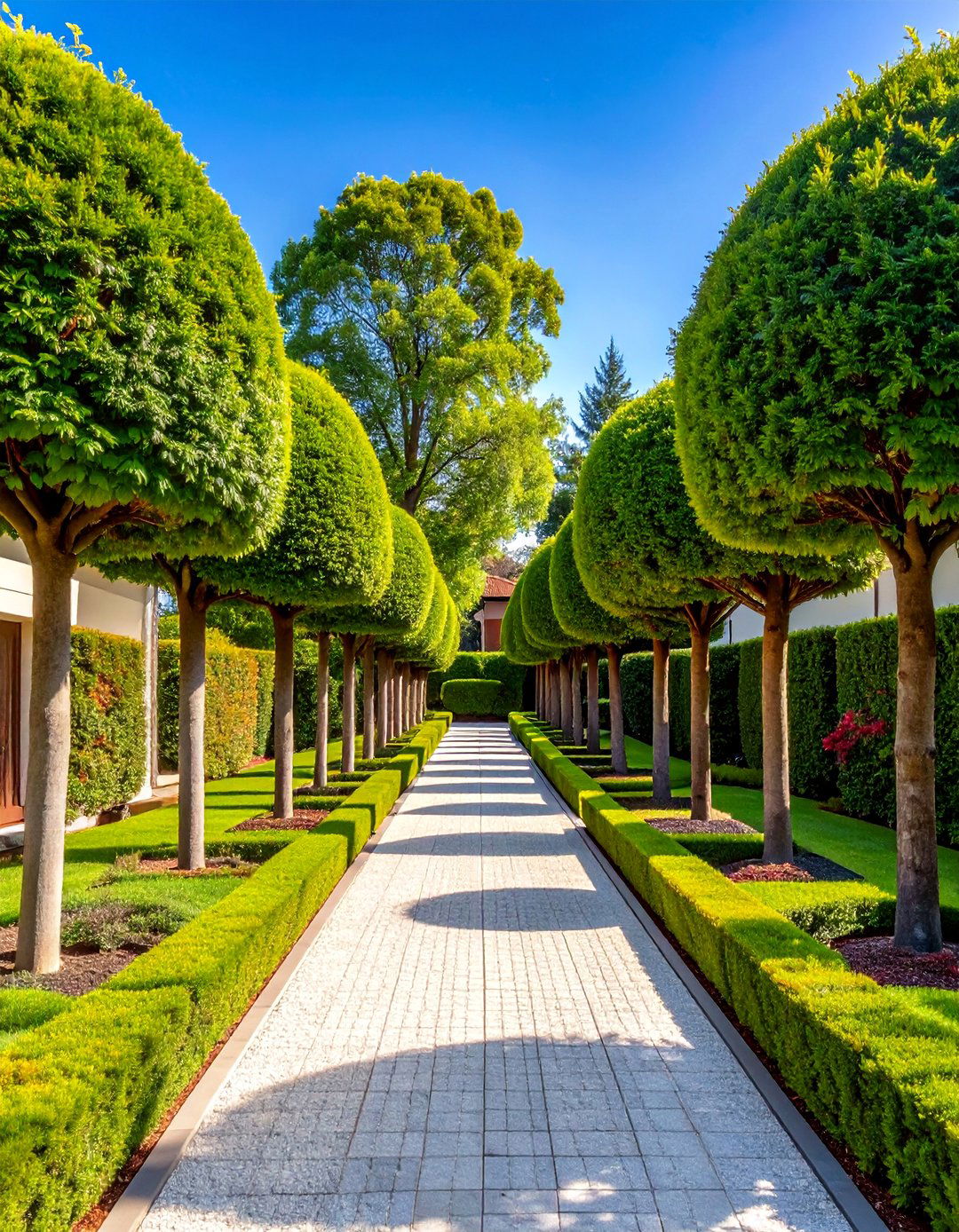
Create formal entrance approach using boxwood standards arranged in parallel lines forming elegant allee design. These tree-form boxwoods feature single trunks topped with carefully maintained spherical crowns. The symmetrical arrangement creates impressive formal entrance while maintaining human scale. Uniform spacing and height maintenance ensure clean, professional appearance. Underplant with simple groundcovers like boxwood edging or seasonal flowers for additional interest without competing with standard focal points. This design works beautifully with Colonial, Georgian, or contemporary architecture. The linear arrangement draws visitors toward entrance while creating sense of arrival and importance. Professional installation and maintenance ensure proper training and long-term structural integrity for these specialized topiary forms.
11. Corner Accent Boxwood Grouping
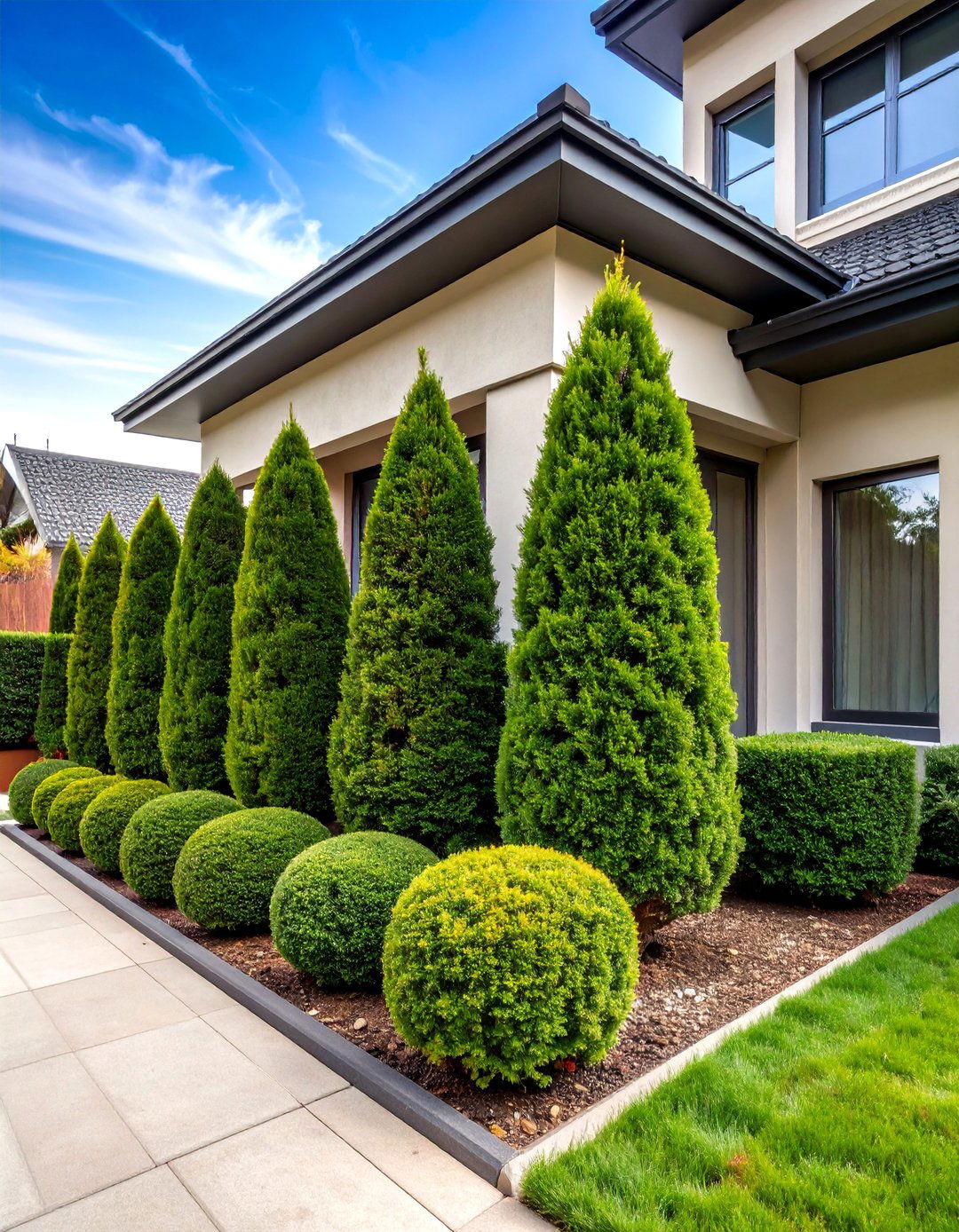
Soften harsh architectural corners and property angles using carefully arranged boxwood groupings in varying heights and shapes. This design approach addresses challenging corner spaces while creating focal points and visual flow. Combine different boxwood varieties including spheres, pyramids, and informal shapes for textural interest. The asymmetrical arrangements feel natural while providing year-round structure and color. Additional plantings like hostas, ferns, or seasonal flowers complement the boxwood foundation. This practical design solution transforms awkward spaces into attractive landscape features. The groupings can incorporate decorative elements like garden art, lighting, or small water features. Proper spacing ensures healthy growth while creating full, lush appearance within corner constraints.
12. Formal Boxwood Courtyard Design
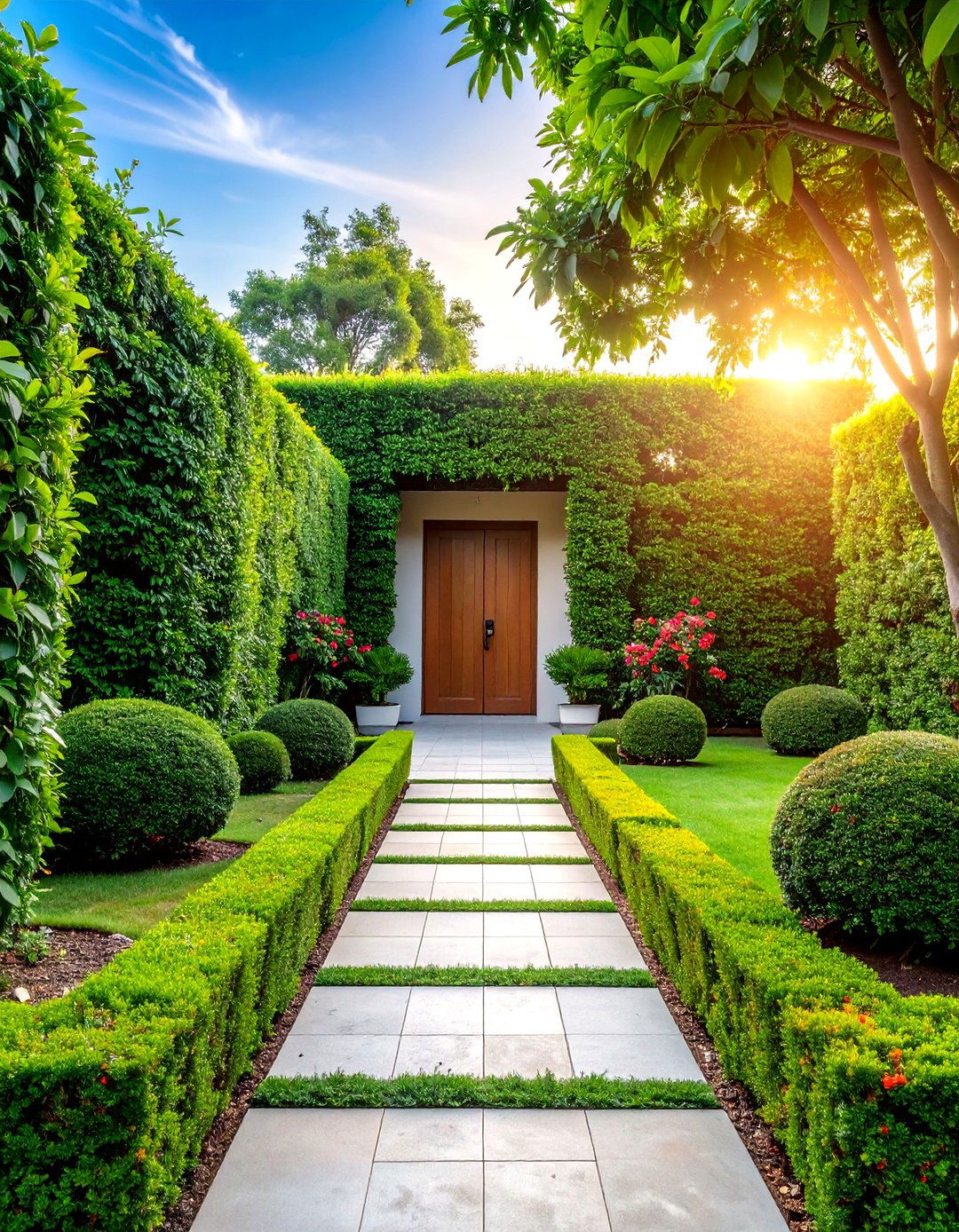
Transform front entries into elegant courtyards using boxwood hedging to define intimate outdoor rooms. This design creates sense of arrival and privacy while maintaining welcoming atmosphere. Low to medium height boxwood hedging outlines courtyard boundaries with openings for circulation. Interior plantings can include formal elements like fountains, sculpture, or specimen trees surrounded by boxwood edging. Paving materials like brick, stone, or gravel complement the formal structure. Seating areas within the courtyard provide opportunities for outdoor enjoyment. This design works particularly well with Mediterranean, Spanish, or contemporary architecture. The enclosed feeling creates microclimate protection while adding significant property value and curb appeal through sophisticated landscape architecture.
13. Boxwood Pathway Edging Design
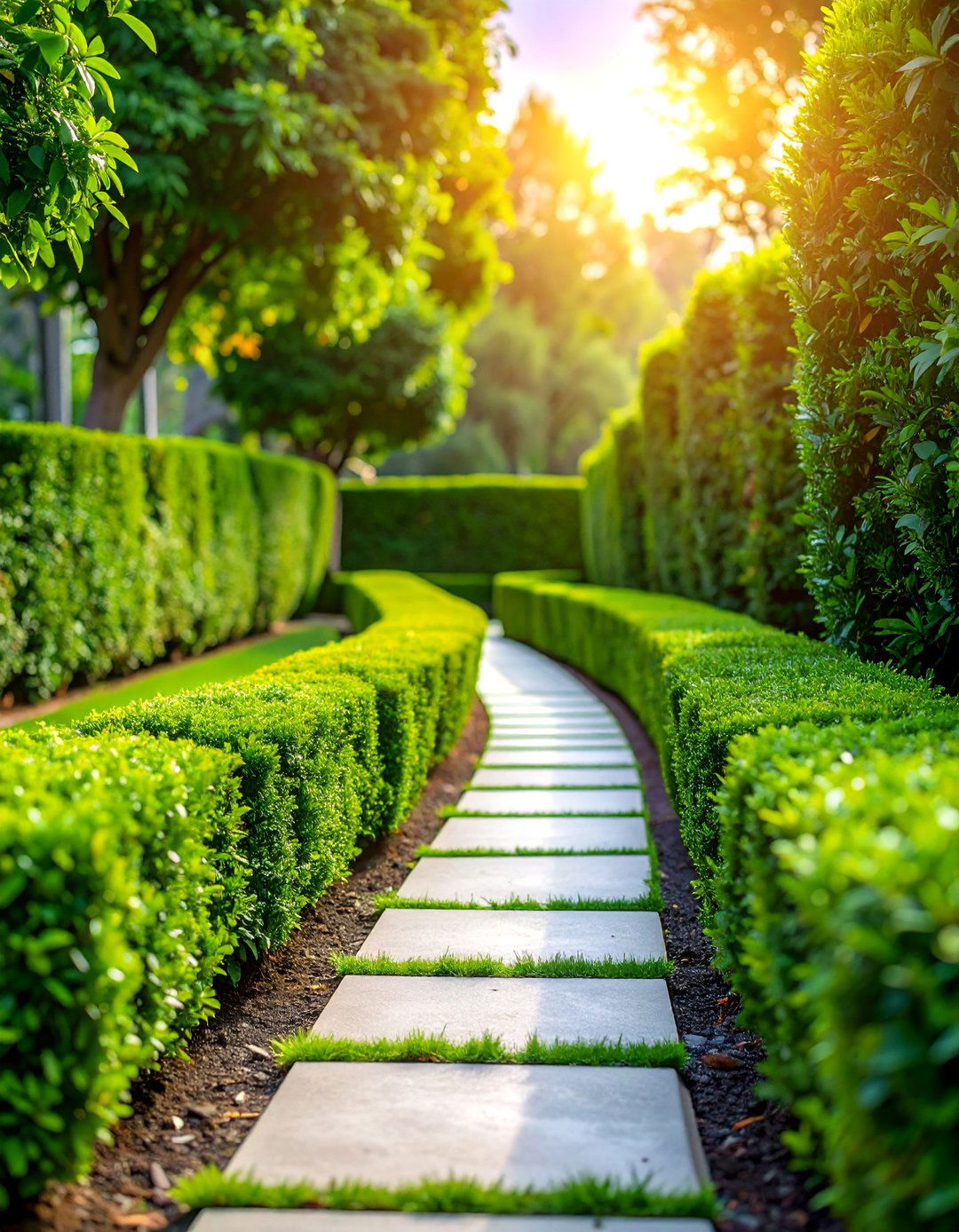
Define walkways and circulation patterns using continuous boxwood edging that guides visitors while creating clean, structured appearance. This practical design approach prevents lawn encroachment while maintaining neat, professional landscape appearance. The boxwood edging height typically ranges from 6-12 inches, providing definition without obstruction. Curves and straight lines can accommodate various pathway configurations and architectural styles. The edging creates perfect transition between hardscape and planted areas. Seasonal flower plantings behind the boxwood edging add color and interest while maintaining structural foundation. This design requires regular trimming but provides long-term value through reduced maintenance needs and enhanced property appearance. Professional installation ensures proper spacing and establishment for dense, uniform growth.
14. Triangular Boxwood Topiary Garden

Arrange pyramid-shaped boxwood topiaries in geometric patterns creating dynamic vertical interest throughout front yard spaces. These cone-shaped elements provide strong architectural statements while maintaining natural plant material warmth. Various sizes create rhythm and visual hierarchy within the landscape design. The triangular forms complement both traditional and contemporary architecture while providing year-round structure. Group arrangements can follow formal symmetrical patterns or more relaxed asymmetrical compositions. Seasonal plantings between topiaries add color and textural contrast. Regular pruning maintains sharp, clean lines essential for topiary success. This design works well in moderate to large front yards where the sculptural elements have adequate space for appreciation. Professional maintenance ensures long-term topiary health and appearance.
15. Cottage Style Informal Boxwood Garden
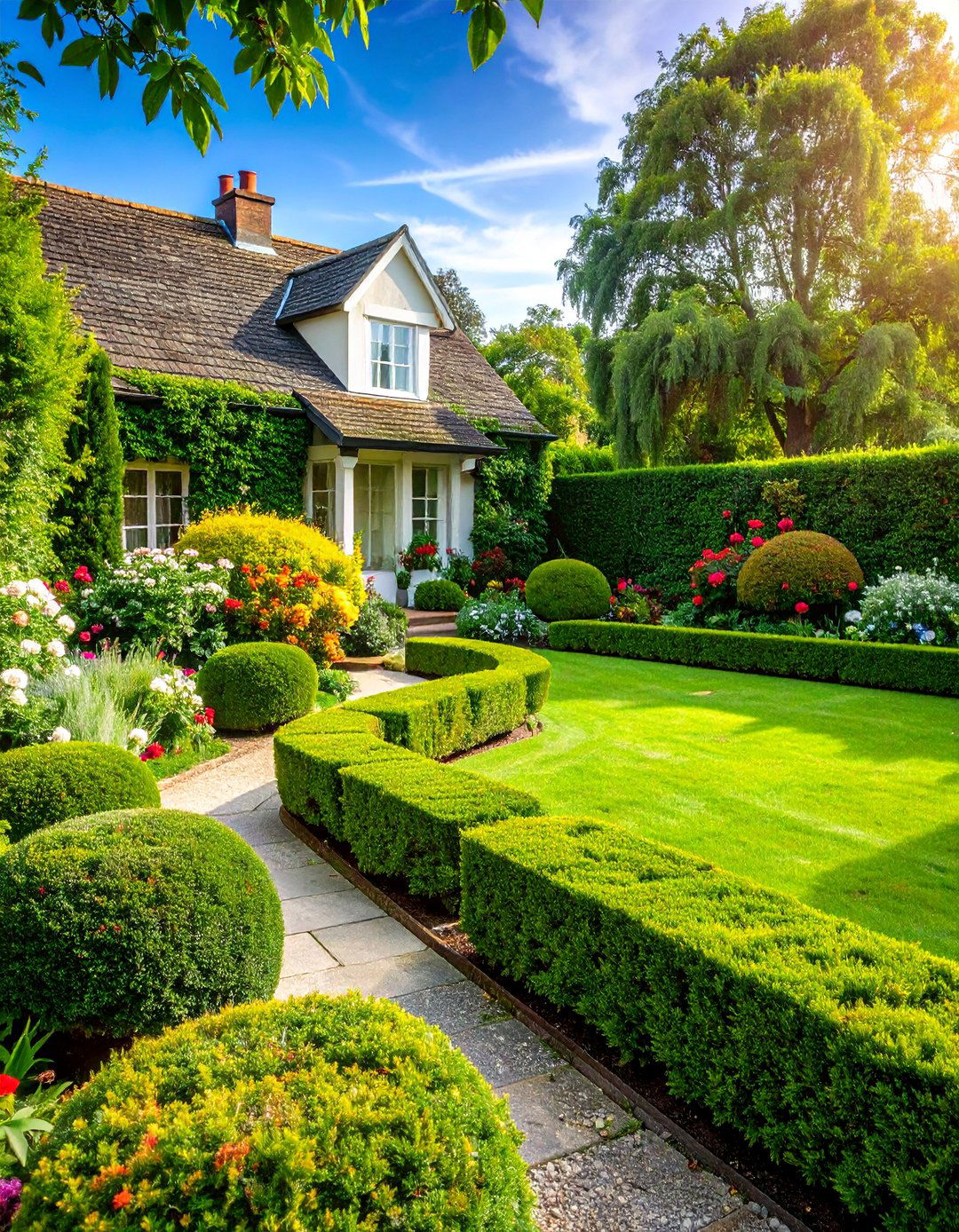
Create relaxed, welcoming front yard atmosphere using loosely pruned boxwood shrubs integrated with cottage garden plantings. This design approach maintains boxwood structure while allowing more natural, less rigid growth patterns. The informal styling complements English cottage, farmhouse, or casual architectural styles. Mixed plantings include perennials, roses, and ornamental grasses creating romantic, abundant feeling. Boxwood elements provide winter structure when other plants are dormant. Pathways can meander through plantings rather than following strict geometric patterns. This design requires less intensive maintenance while providing charming, approachable curb appeal. The relaxed pruning schedule allows boxwood natural character to emerge while maintaining overall garden structure and seasonal interest throughout the year.
16. Modern Minimalist Boxwood Design
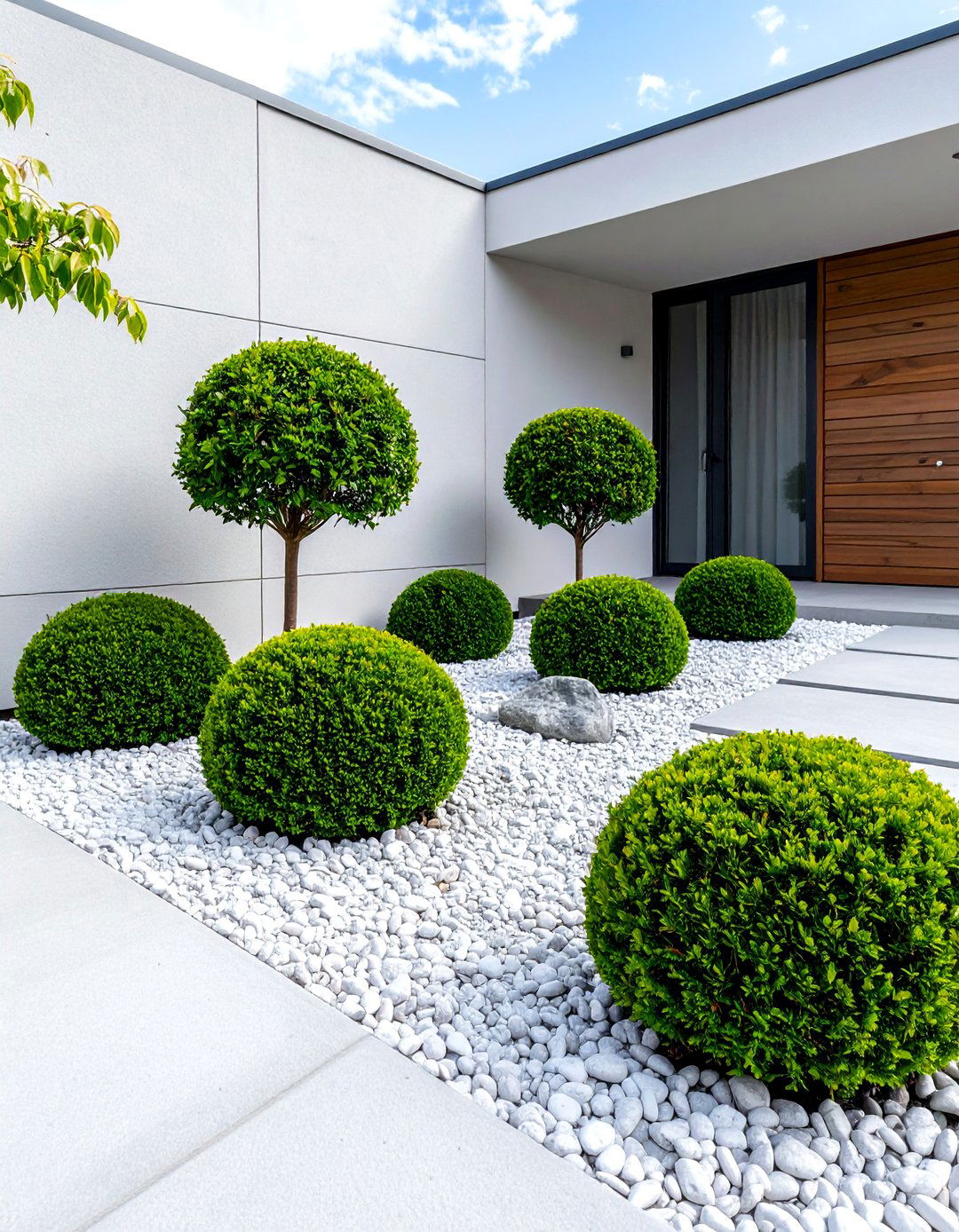
Develop clean, contemporary front yard aesthetics using precisely maintained boxwood elements in simple, geometric arrangements. This design philosophy emphasizes form, proportion, and negative space rather than plant diversity. Large boxwood masses or carefully spaced individual specimens create bold statements against minimal backgrounds. Materials like gravel, concrete, or steel complement the modern aesthetic. Color palettes remain neutral with emphasis on green foliage textures and shapes. The design requires excellent maintenance to achieve crisp, architectural appearance. This approach works beautifully with contemporary, mid-century modern, or industrial architecture. Lighting design enhances sculptural qualities during evening hours. The simplified plant palette creates sophisticated, timeless appeal while requiring focused maintenance attention for optimal results.
17. Boxwood and Rose Garden Combination

Integrate classic boxwood structure with romantic rose plantings creating elegant, traditional garden atmosphere. Low boxwood hedging provides perfect framework for rose beds while offering year-round structure when roses are dormant. The combination creates formal garden feeling while maintaining approachable, romantic character. Boxwood edging contains rose growth while providing clean definition between planted and circulation areas. Color schemes can emphasize specific rose varieties or maintain classic combinations. This design requires attention to both boxwood pruning and rose care but rewards with extended seasonal interest. The partnership between evergreen structure and flowering beauty creates timeless appeal suitable for traditional, cottage, or formal architectural styles. Professional design ensures proper spacing and variety selection.
18. Boxwood Labyrinth Pattern Design
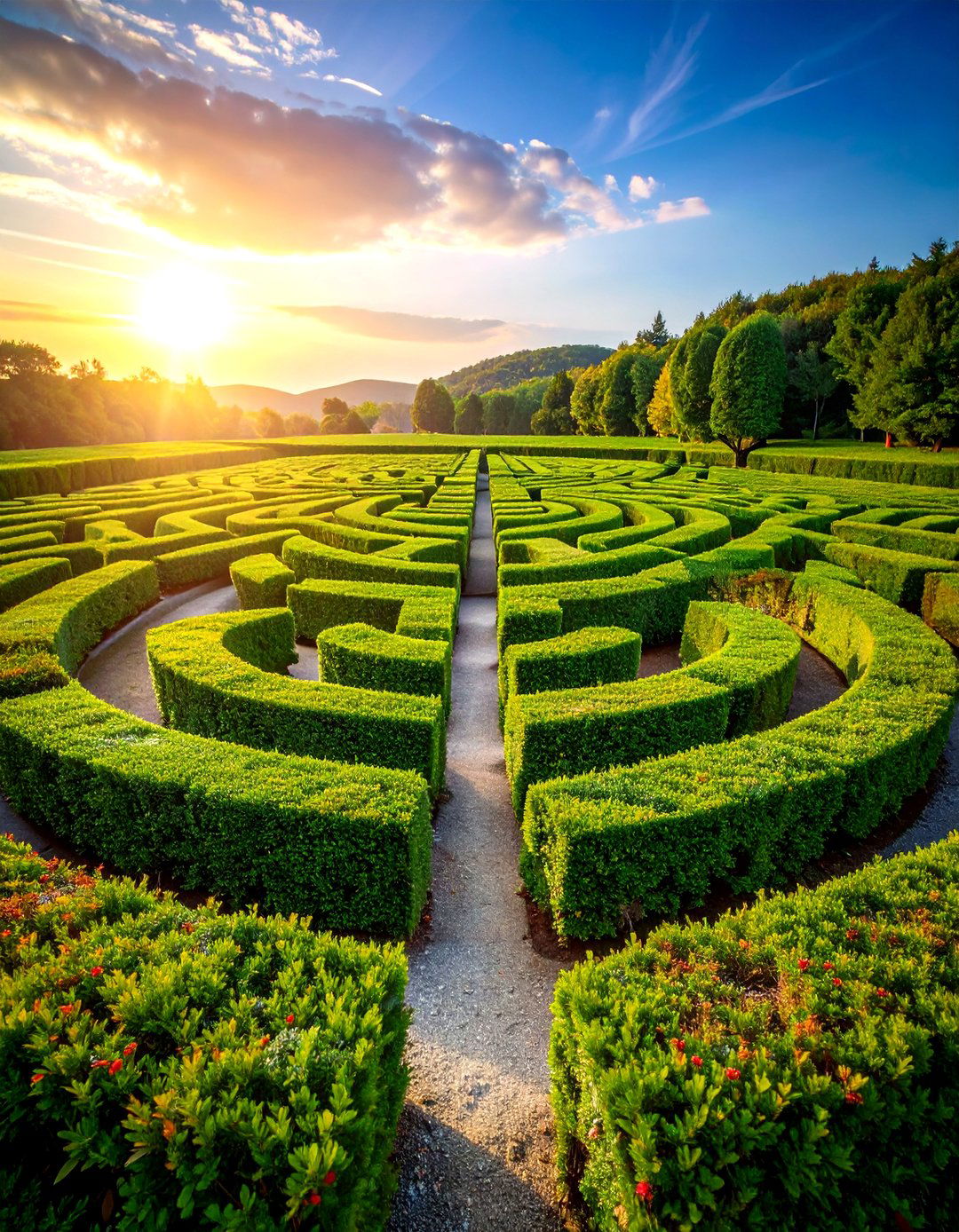
Construct intimate labyrinth patterns using boxwood hedging to create meditative walking experiences within front yard settings. This design differs from mazes by offering single pathway leading to central destination. The labyrinth pattern creates contemplative atmosphere while providing unique landscape feature. Central areas can include seating, sculpture, or plantings for destination focus. Path widths accommodate comfortable walking while maintaining intimate scale. This design requires significant space and long-term maintenance commitment but creates distinctive property character. The pattern can incorporate symbolic elements or personal meaning. Regular maintenance keeps pathways clear and hedge definition sharp. This sophisticated design works best with larger properties and owners committed to unique landscape expression and maintenance requirements.
19. Boxwood Terraced Slope Design

Address sloped front yards using boxwood terracing that creates level planting areas while preventing erosion. This practical design solution transforms challenging topography into structured landscape feature. Boxwood hedging defines each terrace level while providing year-round structure and beauty. Retaining materials can include stone, brick, or timber depending on architectural style and budget. Each terrace level can feature different plantings or design themes while maintaining overall cohesion. The stepped arrangement creates opportunities for varied plant selections and drainage management. This design approach adds property value while solving practical slope challenges. Professional design ensures proper drainage, structural integrity, and appropriate plant selection for slope conditions and exposure requirements.
20. Boxwood Water Feature Integration
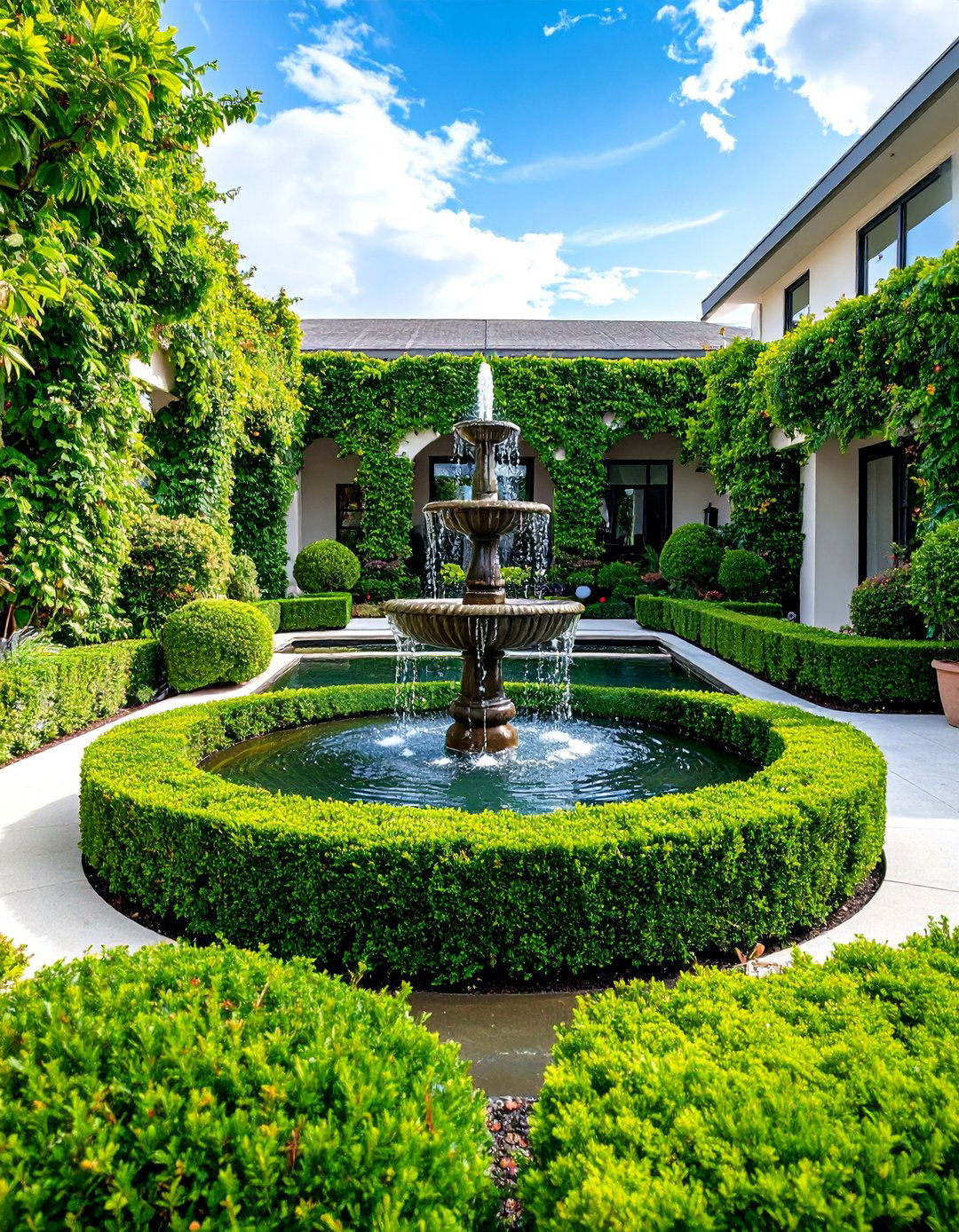
Combine boxwood landscaping with water features creating serene, sophisticated front yard focal points. The evergreen structure provides perfect backdrop for fountains, pools, or water gardens while maintaining year-round appeal. Boxwood hedging can outline water feature perimeters or create geometric patterns around central water elements. The combination creates cooling effects and sound masking while adding significant property value. Various water feature styles from formal fountains to natural ponds can integrate with boxwood design. The plants provide textural contrast against water surfaces while maintaining structured appearance. This design requires attention to both plant and water feature maintenance but creates luxurious, resort-like atmosphere. Professional installation ensures proper drainage, electrical, and plant integration for long-term success.
21. Seasonal Color Boxwood Framework
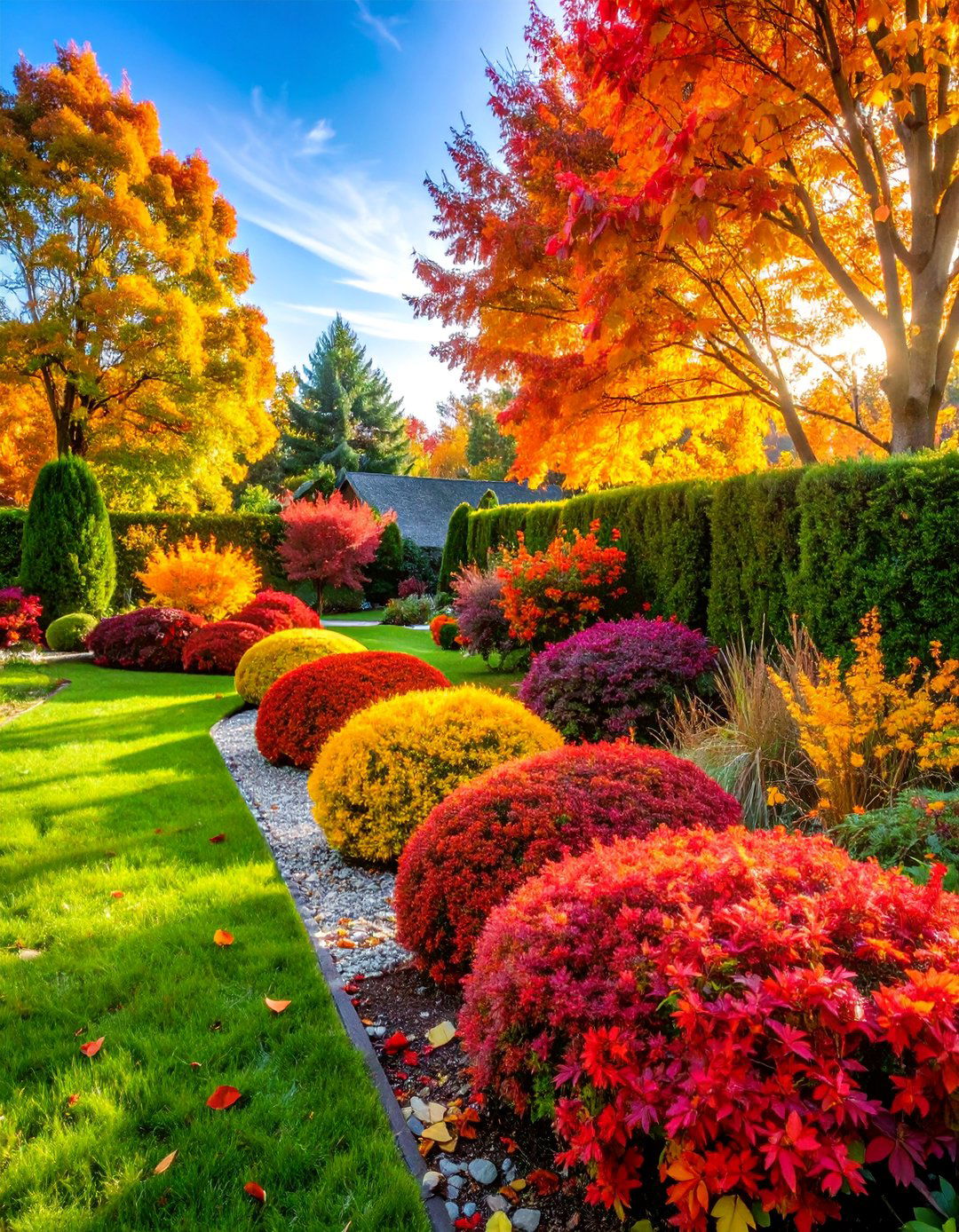
Design dynamic seasonal displays using boxwood structure as permanent framework for changing annual and perennial plantings. This approach provides year-round foundation while allowing creative seasonal expression. The boxwood elements can include hedging, topiary, or mass plantings that remain constant while interior spaces change seasonally. Spring bulbs, summer annuals, fall mums, and winter evergreens create continuous color progression. This design philosophy maximizes seasonal interest while maintaining structural integrity. The framework approach simplifies maintenance by clearly defining planted and circulation areas. Professional design ensures proper proportions and plant selection for successful seasonal transitions. This flexible approach accommodates changing preferences while maintaining property value through consistent structural elements and professional appearance throughout all seasons.
22. Boxwood Privacy Screen Design

Create living privacy barriers using tall boxwood varieties arranged in linear or curved patterns that block unwanted views while maintaining attractive appearance. This practical design solution addresses privacy needs without harsh fencing appearance. Various boxwood cultivars offer different mature heights and growth rates for specific screening requirements. The living screen provides year-round coverage while creating attractive landscape feature. Spacing considerations ensure dense coverage while allowing proper air circulation and maintenance access. This design can incorporate gates or openings for circulation needs. The screening effect improves over time as plants mature and fill gaps. Professional design ensures proper variety selection, spacing, and maintenance requirements for effective screening while maintaining neighborhood compatibility and aesthetic appeal.
23. Boxwood Sculpture Garden Display

Transform front yards into outdoor galleries using boxwood topiary art in various sculptural forms including animals, geometric shapes, or abstract designs. This creative approach showcases topiary artistry while creating unique neighborhood landmark. Various skill levels can attempt different complexity levels from simple geometric forms to elaborate figurative sculptures. The sculptural elements can rotate seasonally or remain permanent installations depending on maintenance capabilities. This design requires significant artistic vision and maintenance commitment but creates truly distinctive property character. Professional topiary artists can create custom designs or provide training for homeowner maintenance. The sculptural approach works with various architectural styles when properly scaled and positioned. Regular maintenance preserves artistic integrity while ensuring plant health and continued visual impact.
24. Boxwood Greenhouse Garden Integration
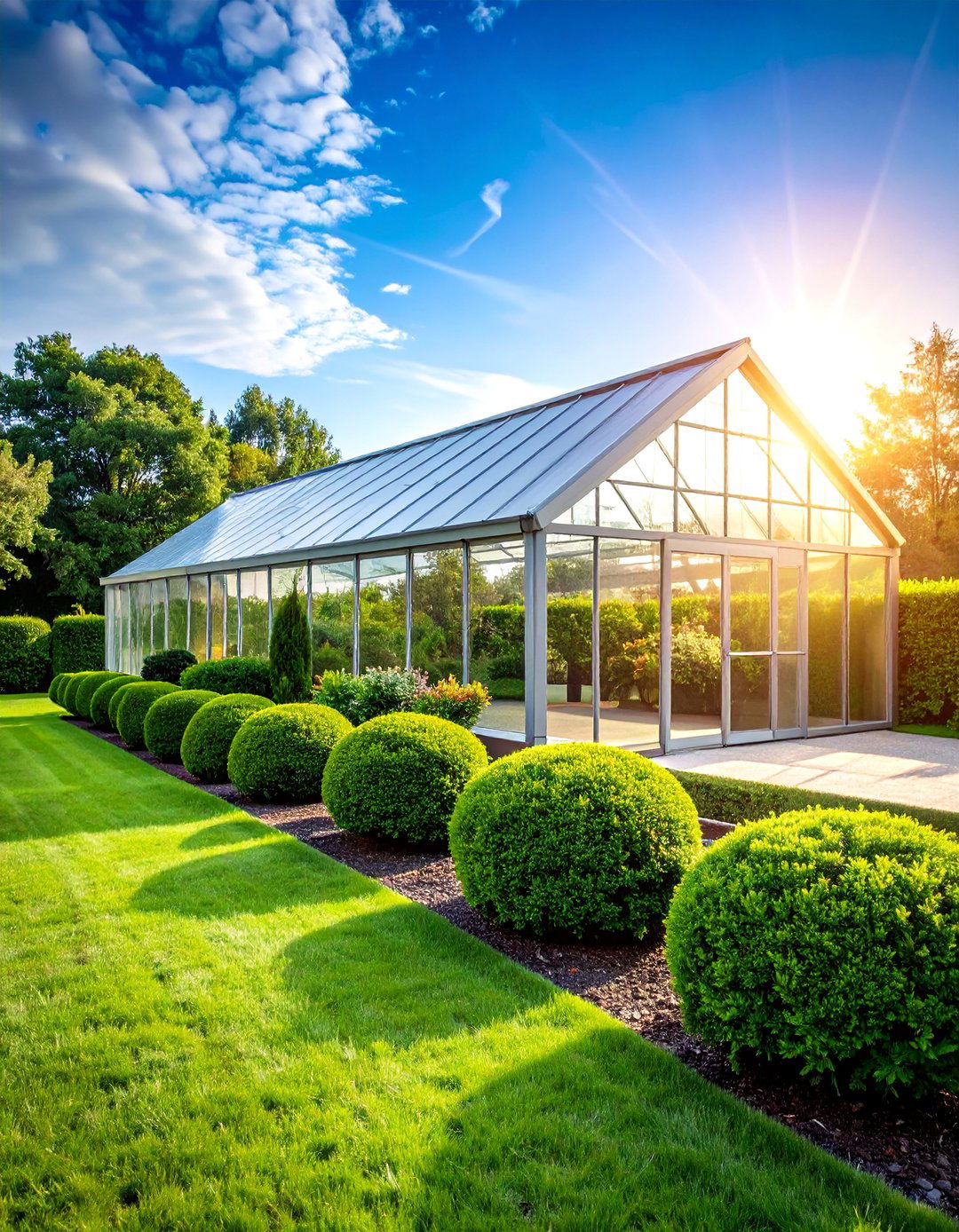
Coordinate boxwood landscaping with greenhouse structures creating cohesive design that supports both ornamental and practical gardening activities. The boxwood elements can provide screening, framework, or decorative accents around greenhouse installations. This design approach creates sophisticated hobby garden atmosphere while maintaining attractive street appeal. The combination allows serious gardening activities while presenting polished appearance to neighbors. Boxwood plantings can define greenhouse areas while providing wind protection and visual integration with house architecture. Pathways between greenhouse and boxwood gardens create functional circulation while maintaining design continuity. This approach works well for serious gardeners wanting both practical growing space and attractive landscape presentation. Professional design ensures proper placement, utilities, and plant integration for successful combination.
25. Boxwood Four-Season Interest Design
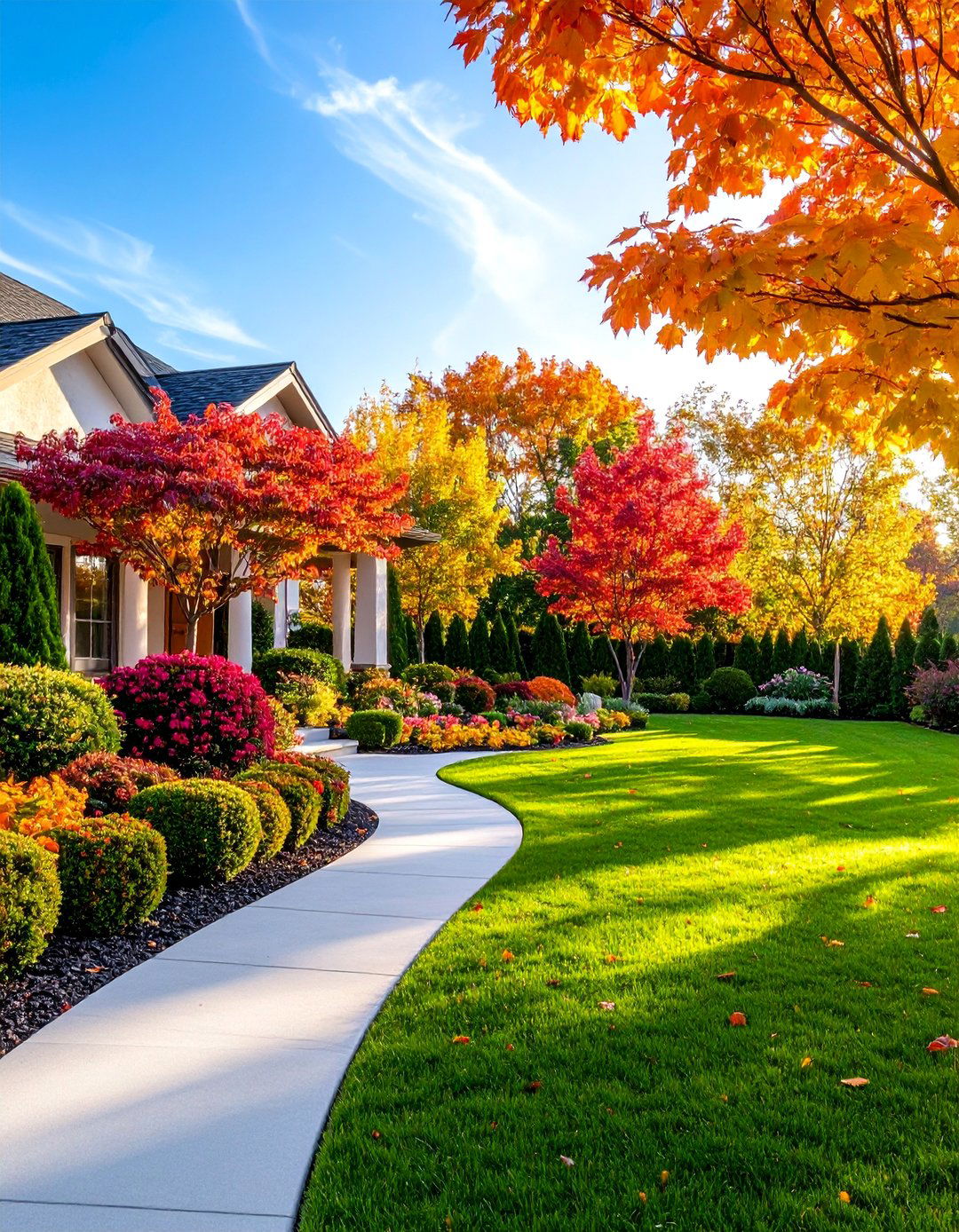
Develop comprehensive front yard design using boxwood as foundation for year-round beauty that evolves through seasonal changes while maintaining consistent structure. This holistic approach incorporates spring bulbs, summer perennials, fall color, and winter interest plants within boxwood framework. The evergreen structure provides constant foundation while seasonal elements create changing beauty throughout the year. Careful plant selection ensures continuous interest and color progression. The design includes considerations for maintenance access, winter protection, and long-term plant relationships. This comprehensive approach maximizes property appeal while providing gardening satisfaction through all seasons. Professional design ensures proper plant selection, timing, and maintenance requirements. The four-season philosophy creates sophisticated landscape that rewards observation and provides continuous visual interest regardless of weather or season.
Conclusion:
These 25 front yard boxwood designs offer diverse approaches for creating sophisticated, year-round landscape beauty. From formal geometric patterns to relaxed cottage styles, boxwood adapts beautifully to various architectural styles and personal preferences. Each design concept provides complete transformation potential while addressing practical considerations like maintenance, climate, and property scale. Success depends on proper plant selection, professional installation, and consistent maintenance commitment. The investment in quality boxwood landscaping delivers lasting property value, curb appeal, and personal satisfaction through timeless evergreen beauty.


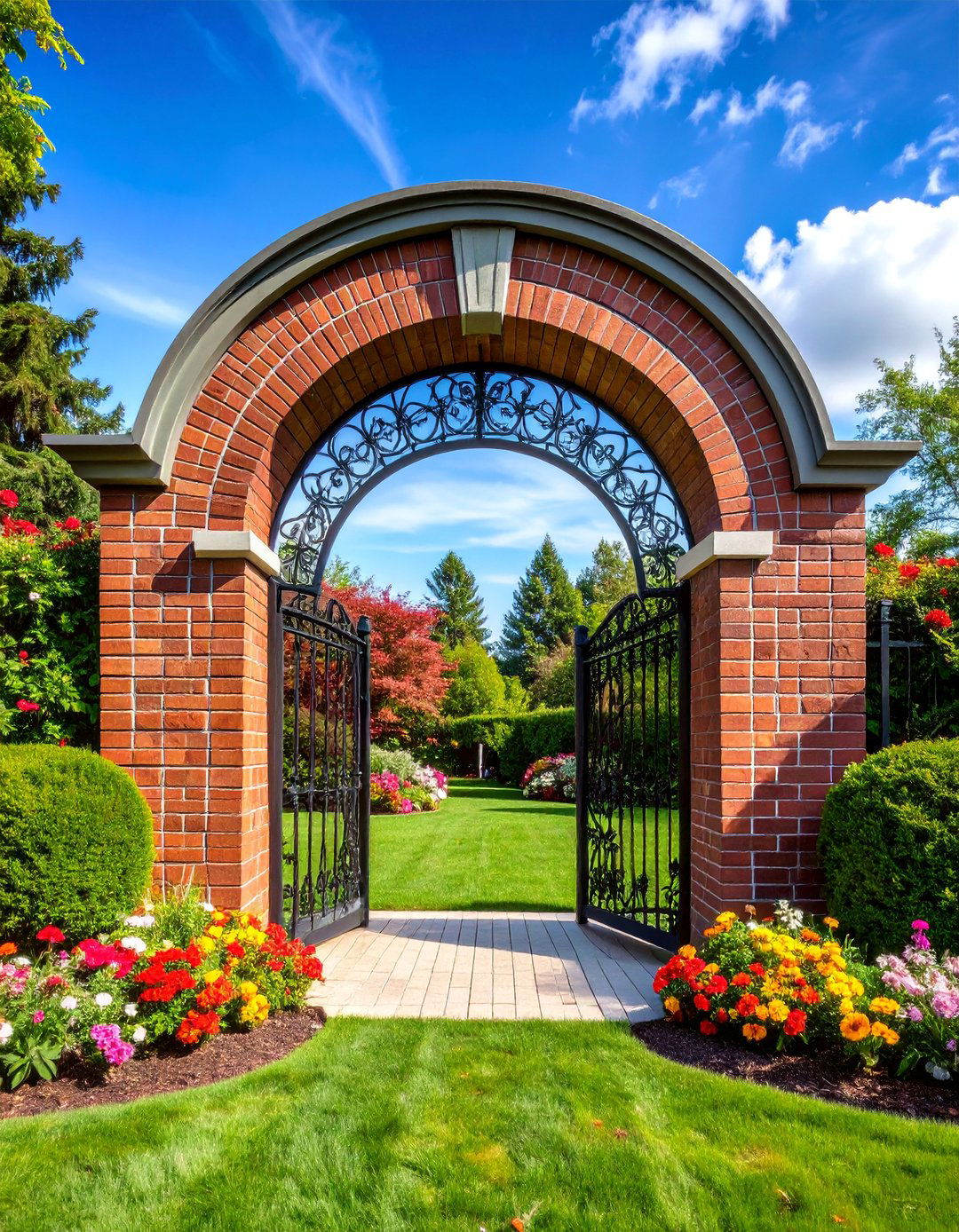
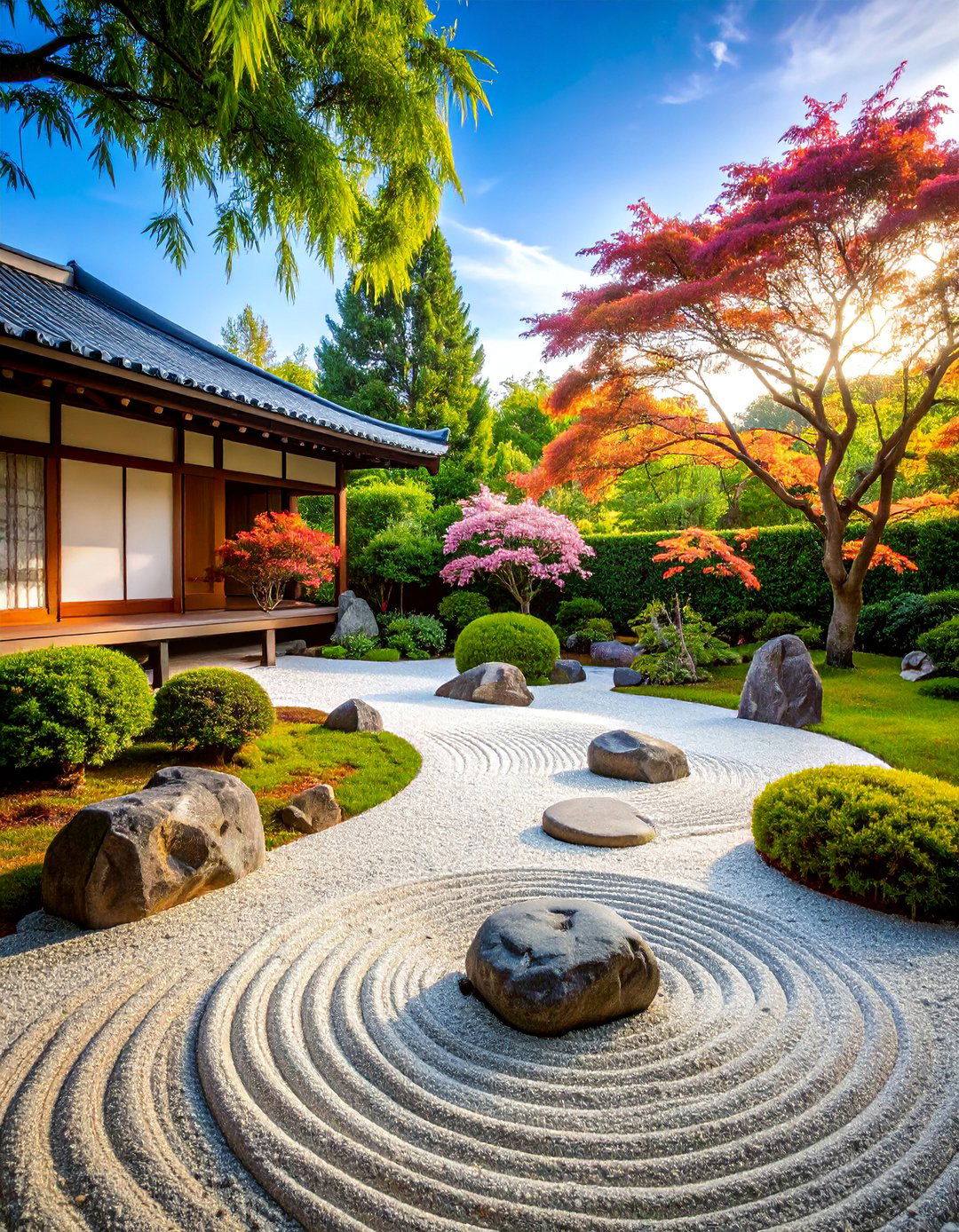

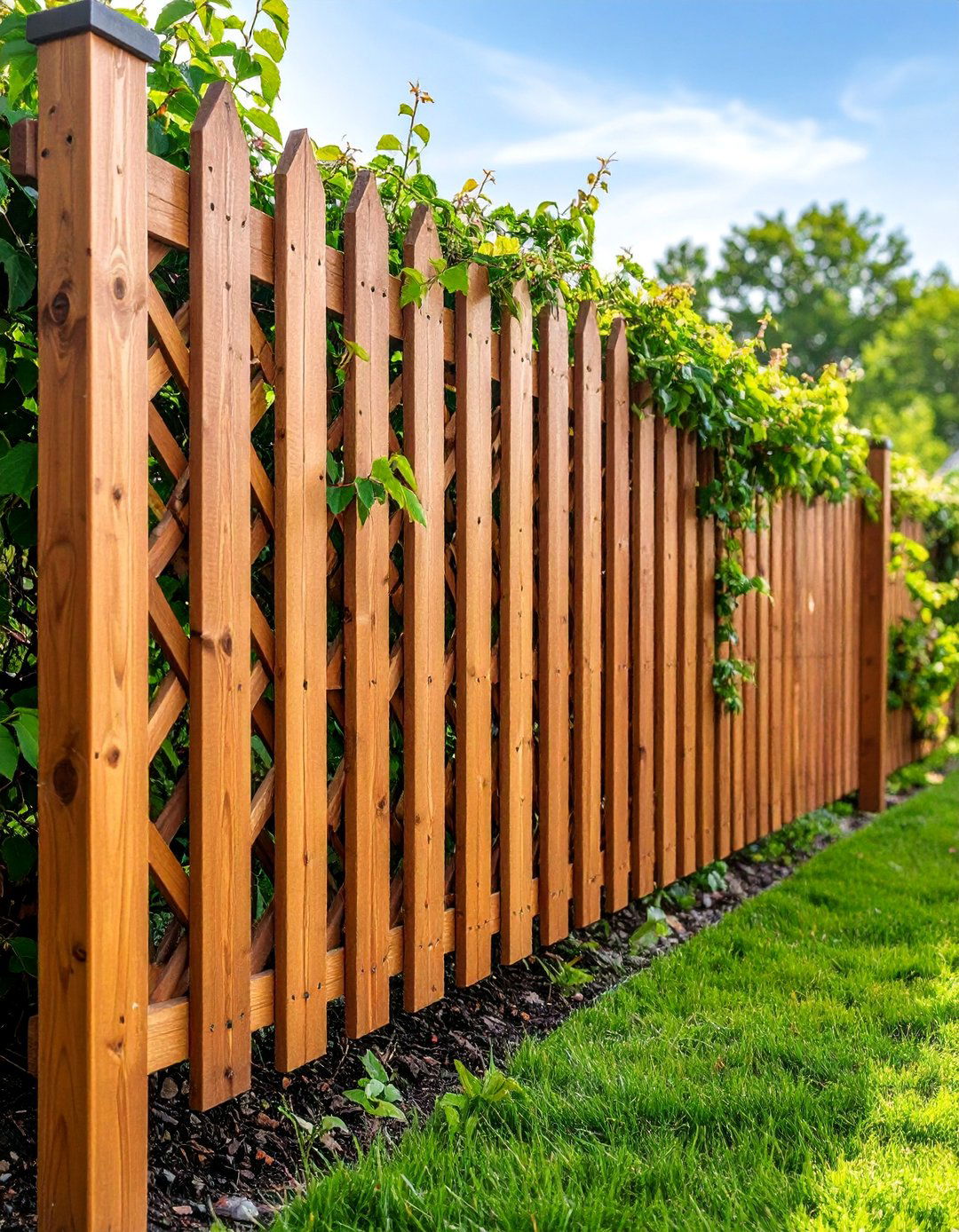

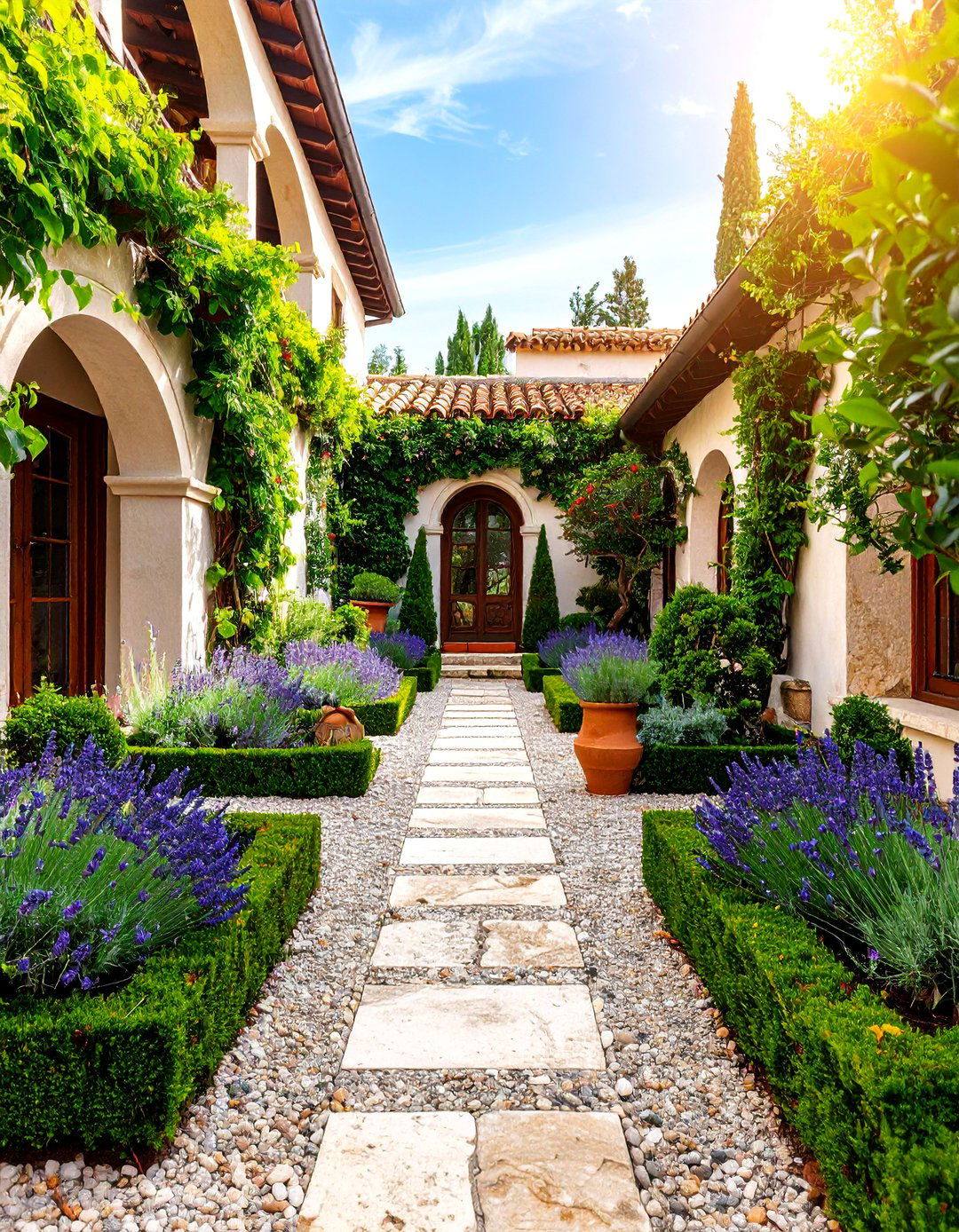


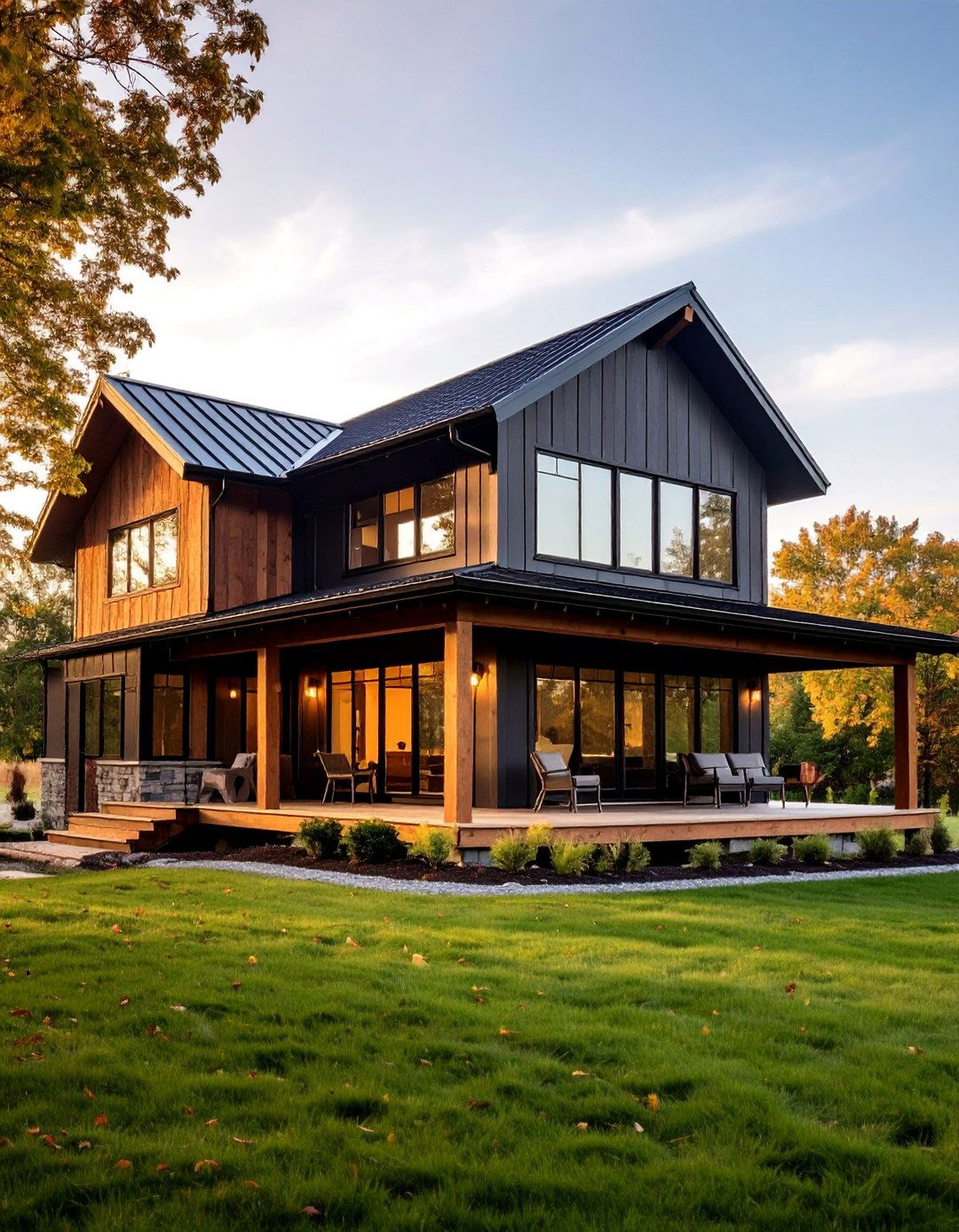

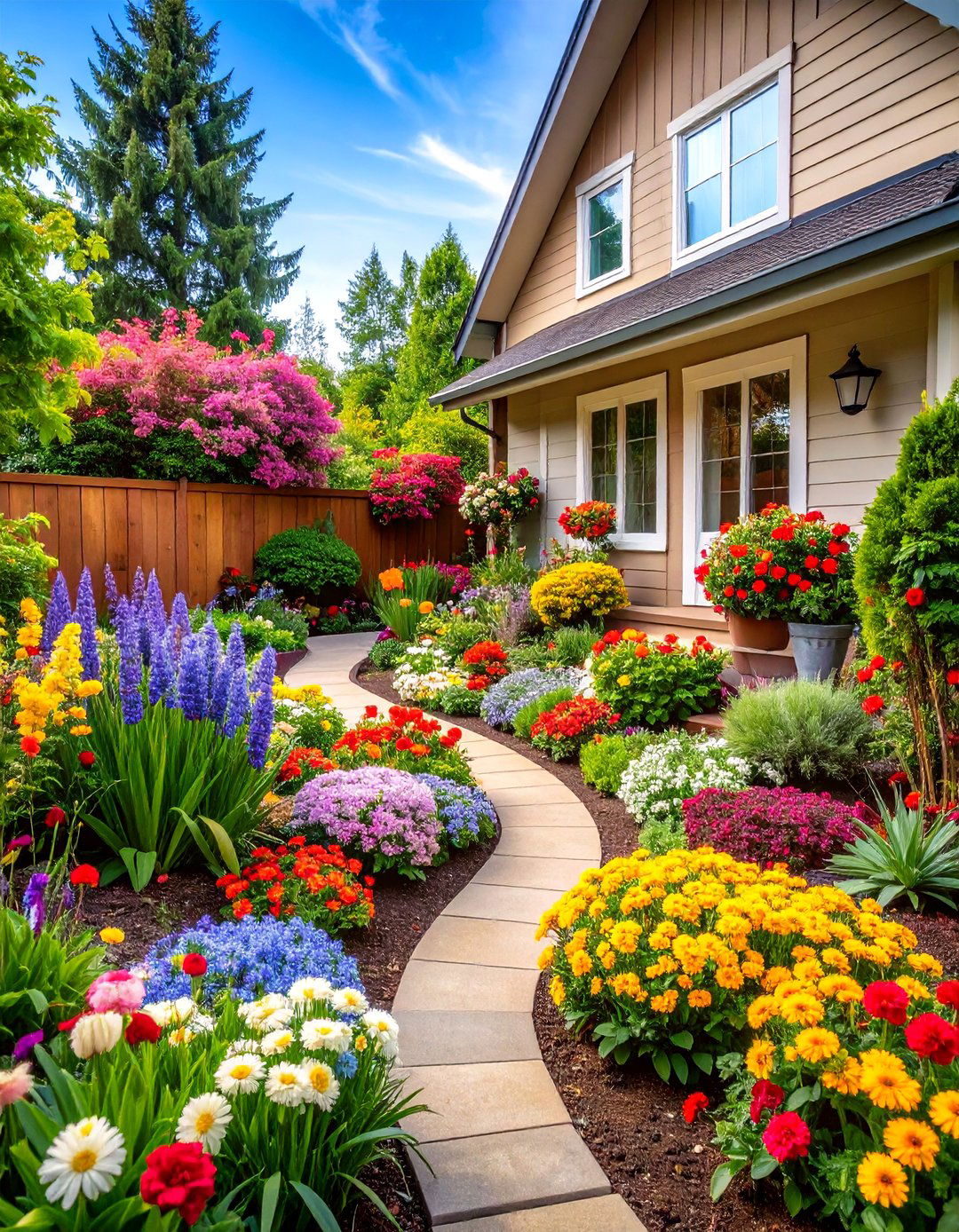
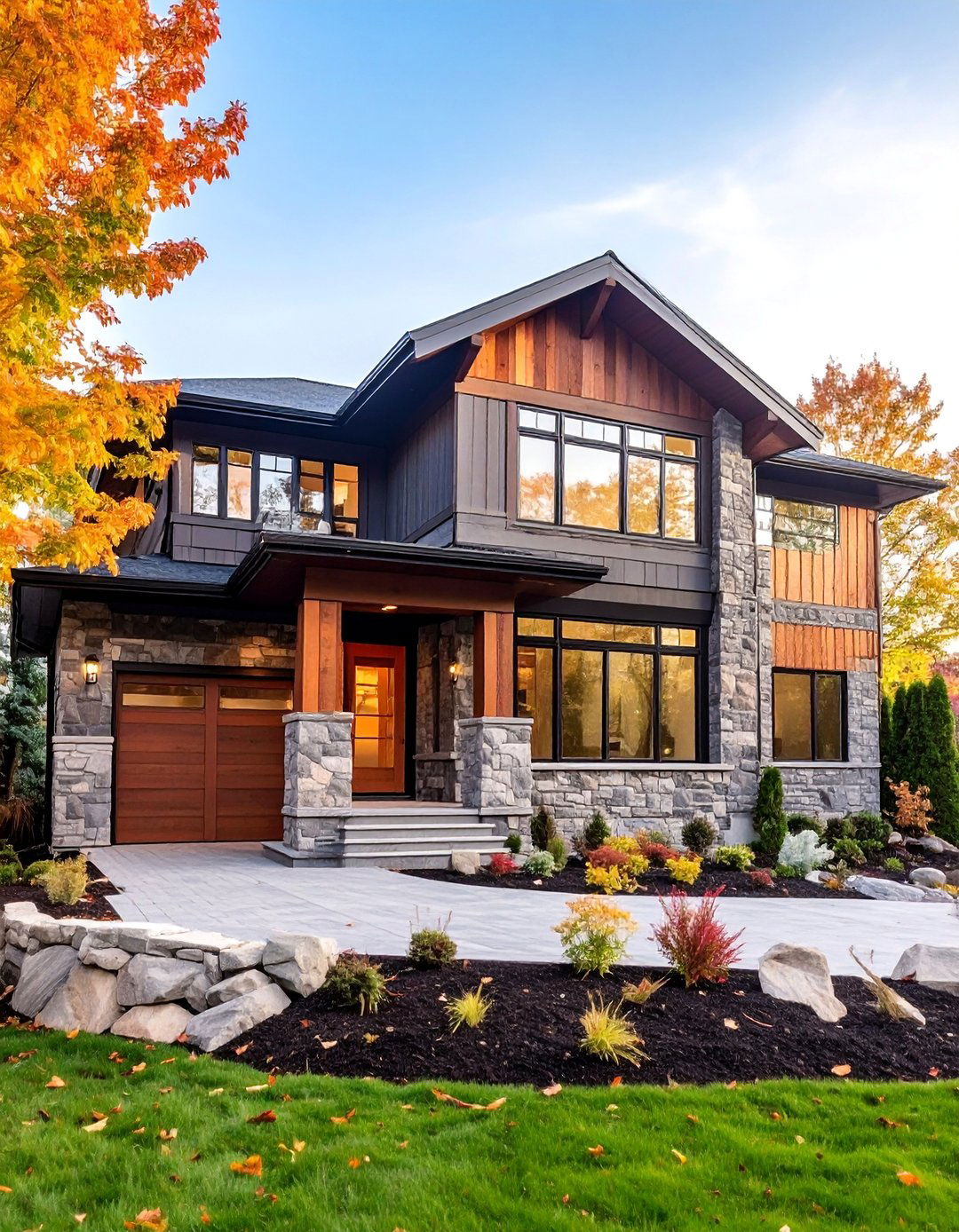

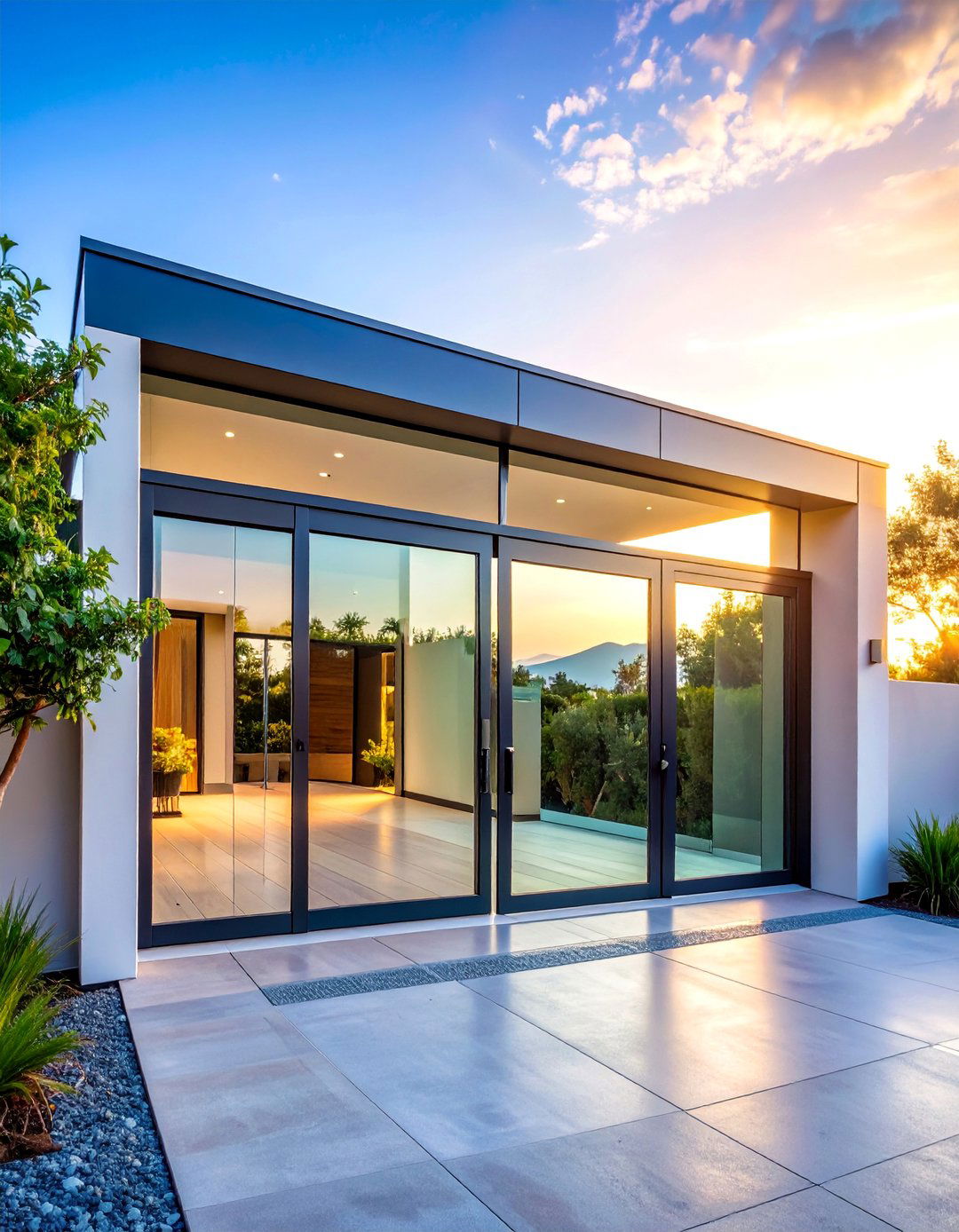
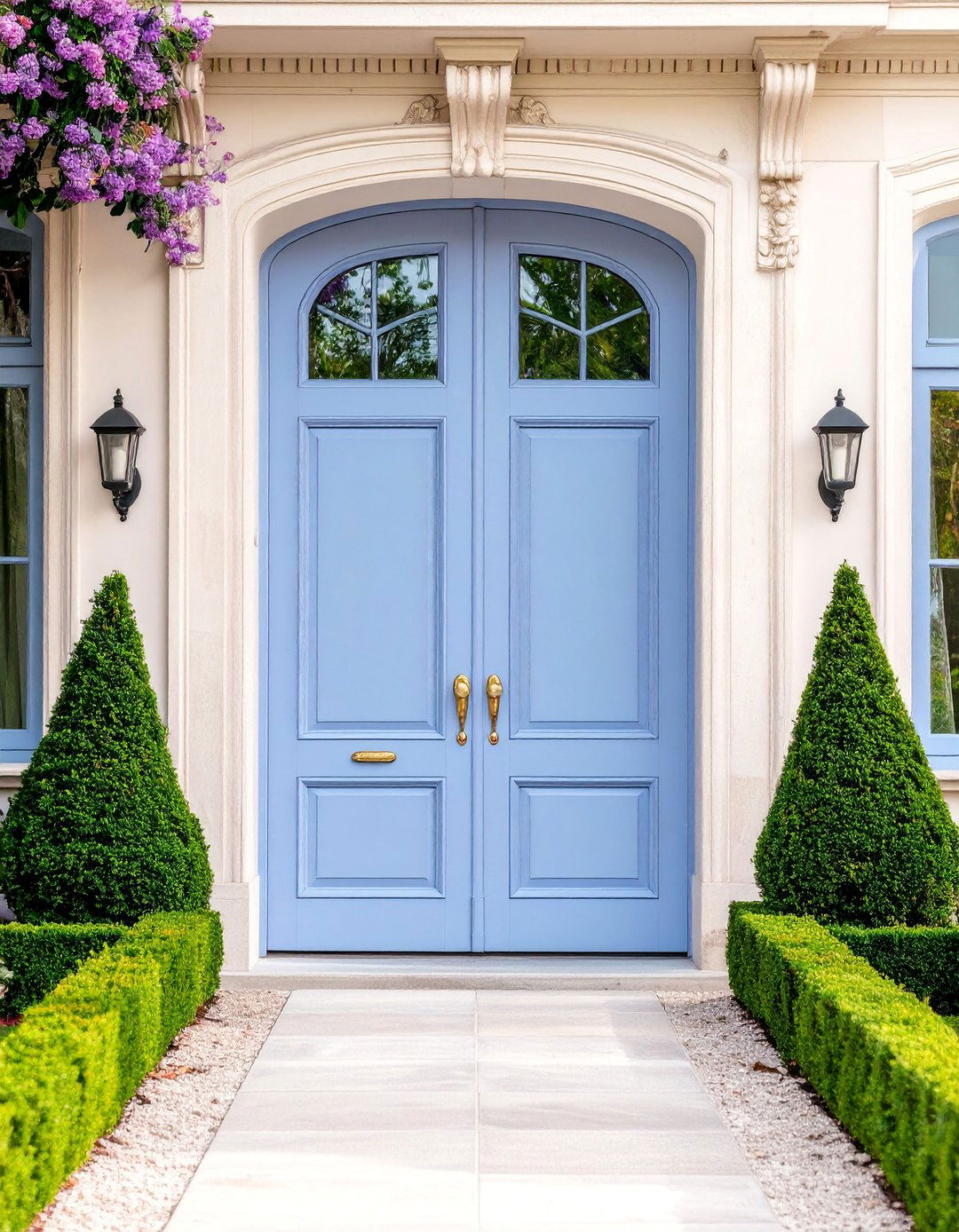
Leave a Reply